Commercial of Old People Going Out All Night and Becoming Young Again
l TV ads that made history
As any fan of AMC'due south acclaimed television series "Mad Men" knows, advertising is an art class, likewise as a high-stakes game. A 30-second 2019 Super Bowl spot price $v.25 million, or $175,000 per second. Certain it'south a lot of cash, but a worthwhile investment considering the spot reached an audience of virtually 110 one thousand thousand.
The best commercials are fresh and innovative. They may employ witty repartee, a middle-melting narrative, or a pitch from high-profile spokesperson. Any the formula, the goal is the same: convincing people to part with their hard-earned greenbacks—whether through the purchase of a particular product, a political donation, or a charitable contribution.
Advert has evolved over the years, notably with respect to the representation of women. In the early days of television, perky housewives peddled convenience foods and detergents. With the advent of feminism in the 1960s and '70s, advertisers targeted a new demographic: women with children to raise and careers to accelerate. More recently, gender stereotypes have been put under a particularly critical lens, resulting in Procter & Adventure's groundbreaking "Similar a Daughter" campaign, too every bit Gillette's reinvention of its familiar catchphrase, "The all-time a man tin can go" in calorie-free of the "Me As well" movement.
Engineering science besides has changed how advertisers target potential audiences. As opposed to gathering around the television afterwards dinner like their parents and grandparents, millennials and members of Generation Z tend to eat content on demand, frequently on computers and handheld devices. Consequently, digital advertising has experienced double-digit growth in recent years while the traditional telly marketplace has declined.
Stacker tuned into the video athenaeum and consulted newspaper and magazine articles to compile this slideshow of l ads that made television history. Scroll through the list to detect out which politicians launched the nastiest campaign ads, which advertisers came up with the most infectious taglines, and which commercials were so brilliant they put even Don Draper to shame.
Y'all may also similar: Famous commercials from the year you were born
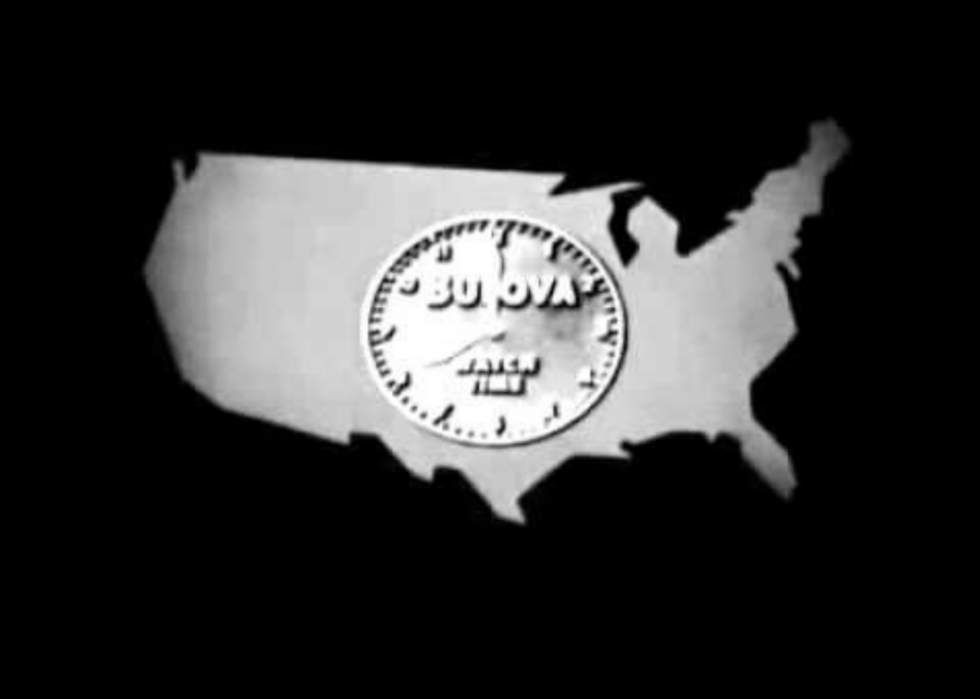
1 / 50
Bulova: "America runs on Bulova time."
On July 1, 1941, WNBT in New York aired a spot for Bulova watches only before a Brooklyn Dodgers game—the first legal commercial in television history. The black-and-white advertisement ran for just nine seconds and featured the image of a picket confront superimposed over Northward America while a voice-over informed viewers, "America runs on Bulova time."
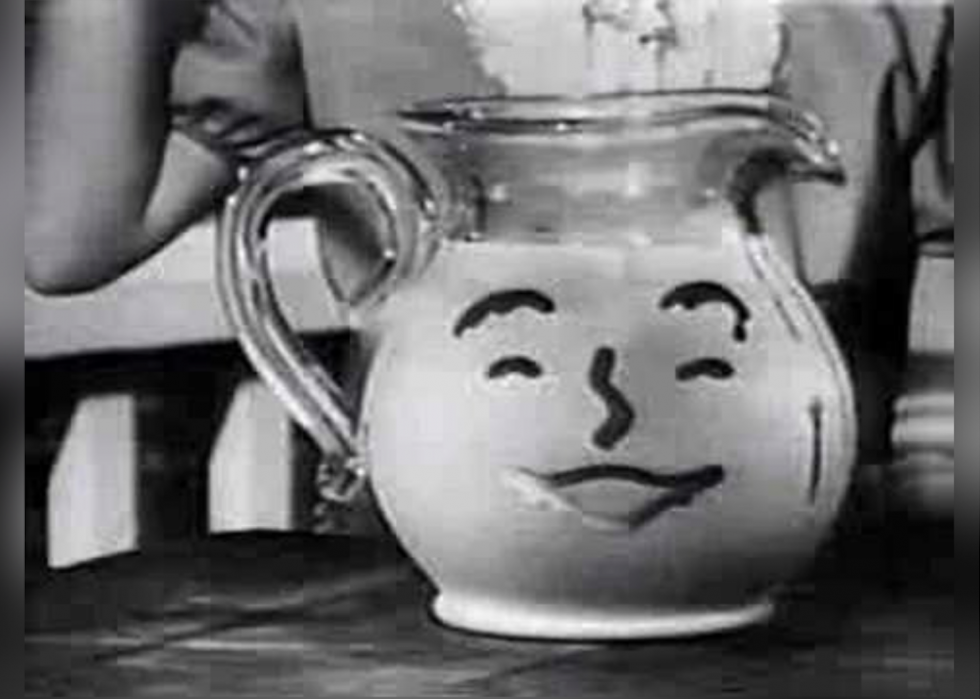
2 / fifty
Kool-Aid
The larger-than-life, anthropomorphic pitcher of Red Dye #40 made its debut on national idiot box in 1954 and has been the face up of Kool-Aid ever since. The spot featured a perky, June Cleaver-esque mom serving the drink to a posse of enthusiastic kids while extolling its many virtues—literally and metaphorically encouraging viewers to "drink the Kool-Aid."
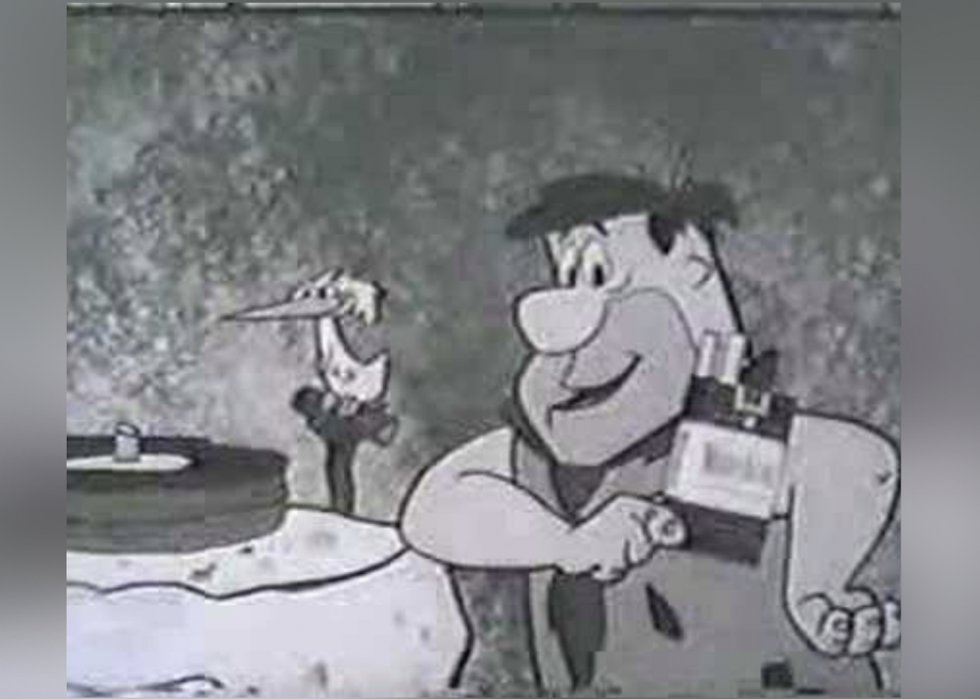
3 / 50
Fred Flintstone for Winston Cigarettes
Smoking was commonplace in the 1960s, and even Fred Flintstone and Barney Rubble indulged at present then. The popular drawing characters shilled a number of products over the years—including Kentucky Fried Chicken, Dove soap, and Winston cigarettes. Spots showing the prehistoric pals lighting up went upward in smoke when tobacco advert was banned on telly in 1970.
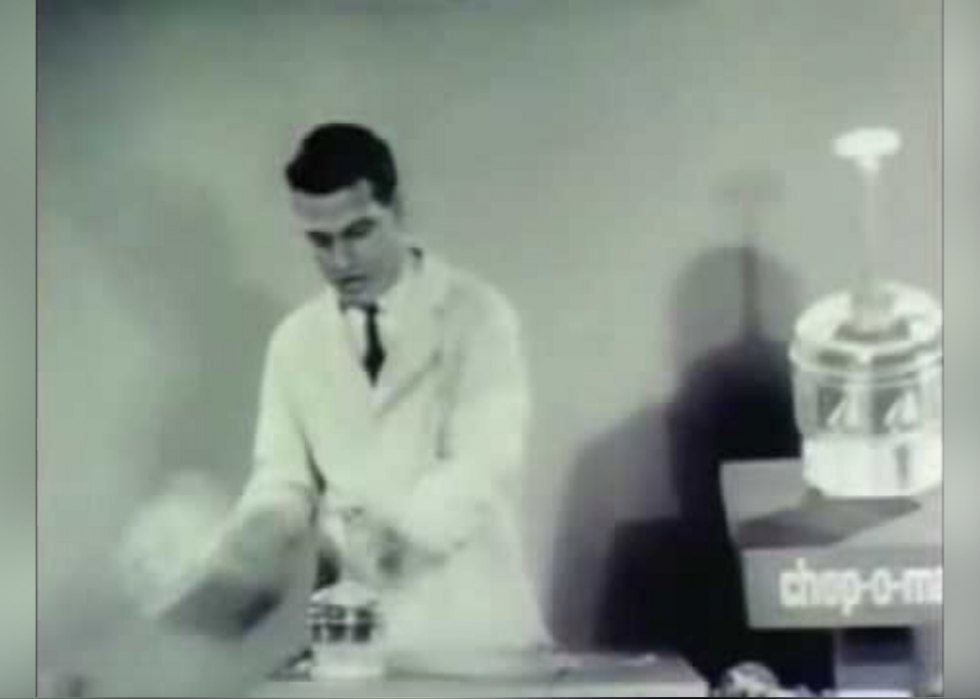
4 / l
Veg-o-Matic: The original infomercial
Samuel Popeil introduced a slew of simple, inexpensive machines designed to revolutionize food preparation; his greatest invention, nevertheless, may be the infomercial. Introduced to belatedly-night television viewers in the early 1960s, Popeil's company, Ronco, aired a serial of commercials demonstrating the Veg-O-Matic, the beginning of many items Ronco would advertise using this method over the side by side 50 years.
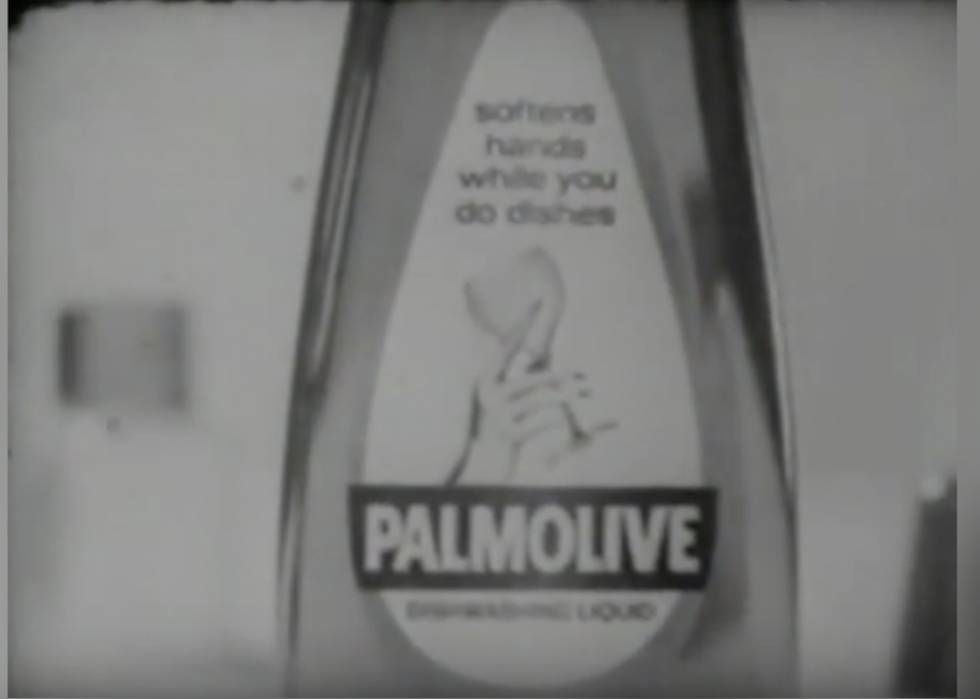
five / fifty
Palmolive: Madge the manicurist
Starting in the late 1960s, downward-to-globe manicurist Madge dished out advice—in the form of Palmolive dish soap—to clients, likewise millions of television viewers throughout the country. Before Madge, who was portrayed by Jan Miner for more than than 27 years, household products were by and large pitched by actresses posing as housewives. Madge's intimate tone and no-nonsense attitude broke with tradition, ushering in an era of new female person voices in advertising.
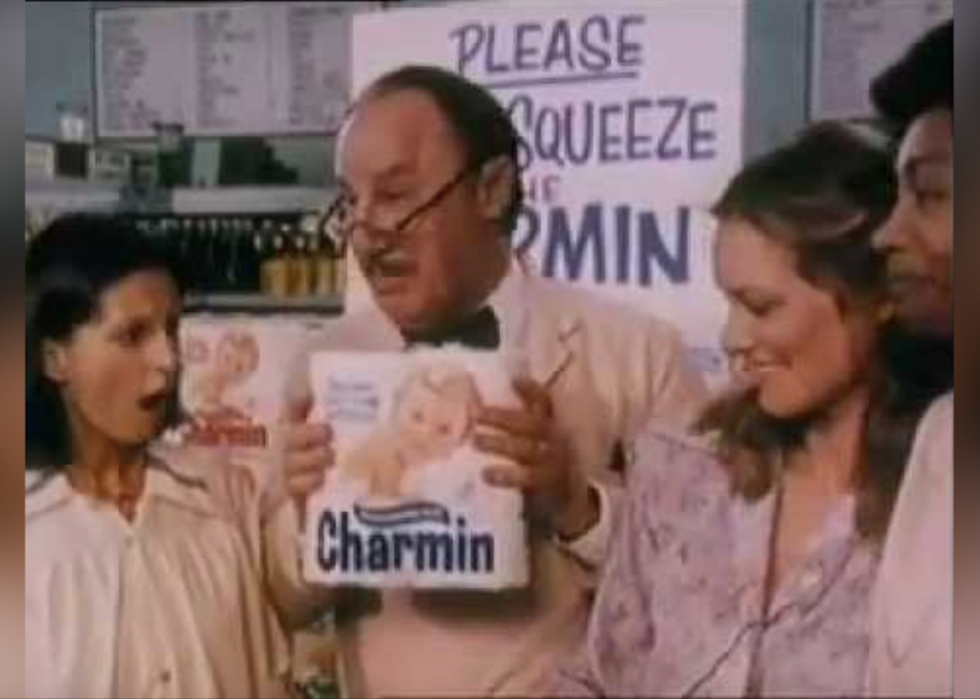
6 / 50
Mr. Whipple: "Please don't clasp the Charmin."
Type A grocer George Whipple ran a tight ship. Introduced to television audiences in 1964, Mr. Whipple admonished customers for 30 years not to clasp the Charmin. The comical ads distinguished the toilet paper from its competitors, with manufacturers Procter & Gamble crediting the character for much of the product's success.
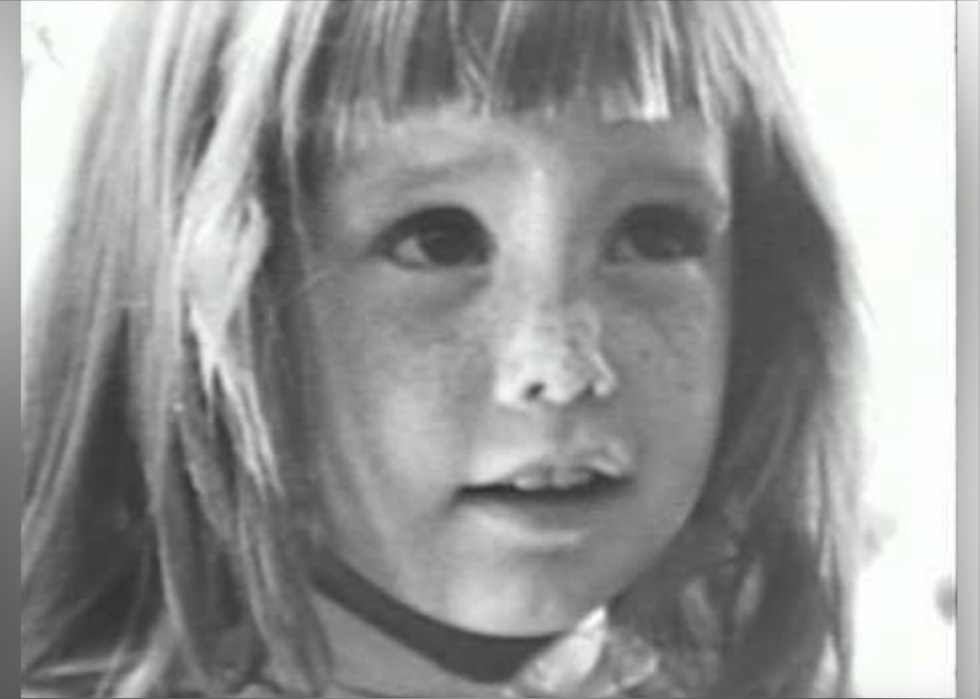
vii / 50
Lyndon B. Johnson: Daisy
The infamous "Daisy" commercial, which aired during the 1964 presidential campaign, is one of the most startling and effective goggle box ads e'er produced. The spot focuses on a immature girl picking the petals off a daisy as she counts to 10; when she finishes plucking the terminal petal, the frame zooms into the girl's heart, and the countdown reverses itself, culminating in the detonation of a nuclear bomb. Commissioned every bit office of President Lyndon B. Johnson'due south re-election campaign, the ad played into Cold War America's greatest fears and was aimed squarely at Johnson's unnamed Republican rival, unapologetic state of war hawk Barry Goldwater.
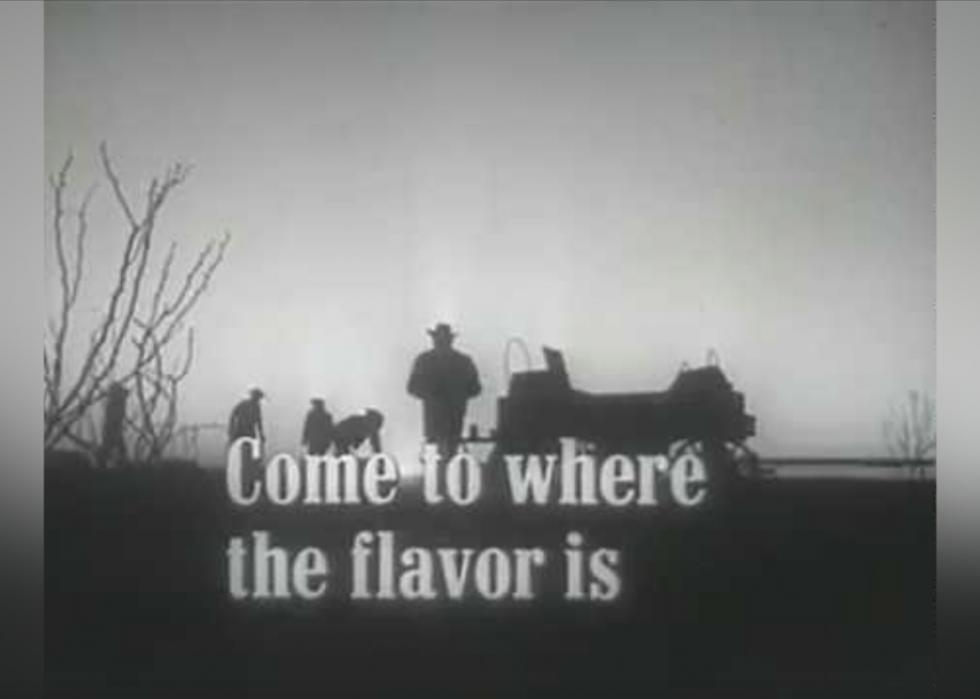
eight / l
Marlboro State
The Marlboro Man, accompanied by theme music from the classic Western "The Magnificent Seven," first galloped across the open range and into homes around the land in 1957. Originally a filtered cigarette aimed at women, the renowned Leo Burnett Bureau created the rugged Marlboro Homo to target a more masculine demographic and combat lackluster sales. Revered as an American expression of liberty and individuality, the Marlboro Man did merely that, catapulting Philip Morris to the top of the tobacco industry. 4 actors who portrayed the mysterious cowboy died of tobacco related-illness, including anti-smoking activist Wayne McLaren.
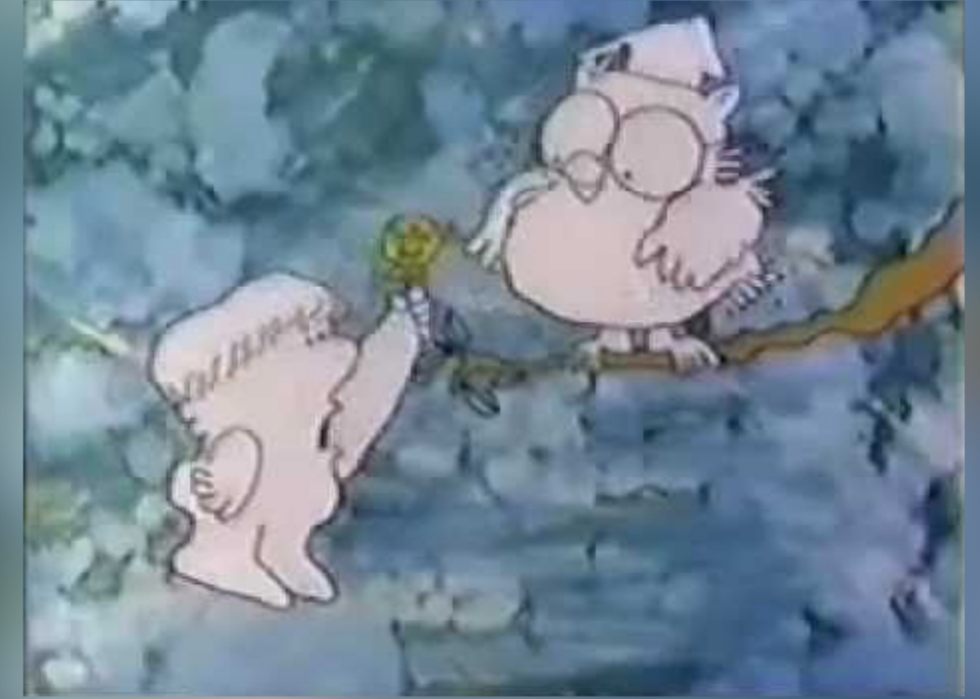
9 / 50
Tootsie Pop: "How many licks?"
How many licks does information technology take to get to the Tootsie Curlicue centre of a Tootsie Popular? In the classic 1968 ad, a immature boy sets out to find the respond. Wise Old Owl thinks he can solve the riddle—but even he gives in to temptation afterwards just three licks, chomping downwards on the confection. Created by the Detroit-based Doner agency, the animated prune charmed audiences with its tricky concept and gentle humour. So, simply how many licks does information technology accept to become to the centre of a Tootsie Pop? In 2015, a squad of researchers from NYU and Florida State put their heads together to find out the respond. After hours of exhausting research, information technology was adamant that it takes approximately 997.
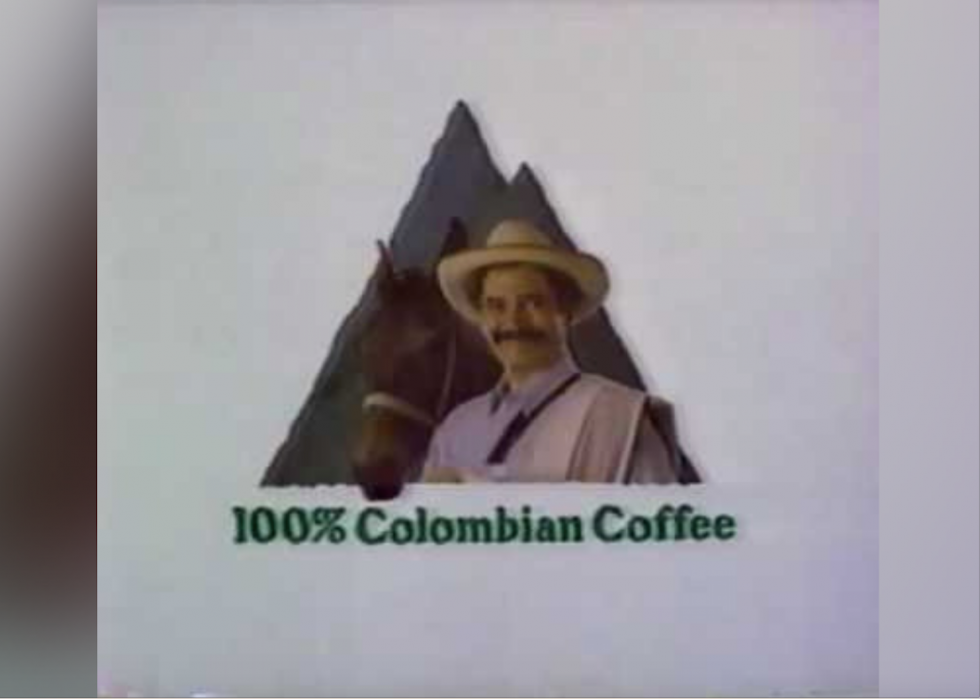
ten / fifty
Juan Valdez: National Federation of Coffee Growers
Coffee farmer Juan Valdez, much like the iconic Marlboro Man, was the face of the National Federation of Java Growers for almost 50 years. In 1969, Carlos Sanchez brought the character to life in a seemingly countless series of television commercials. The ads depicted hardworking Valdez lovingly disposed his ingather: the antonym of the Colombian drug lords who loomed big in the popular imagination.
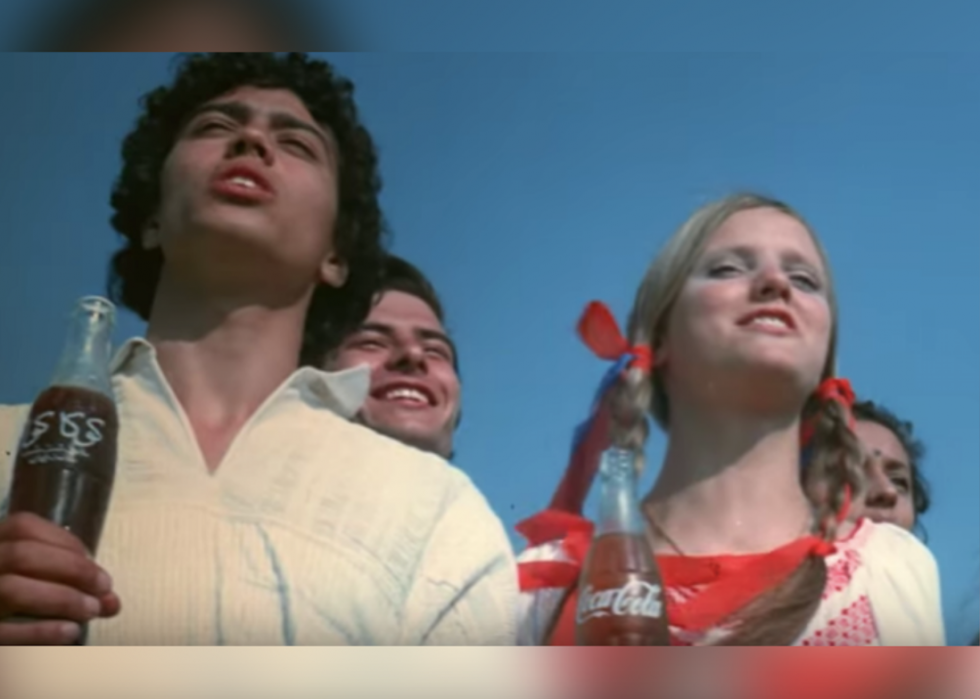
eleven / 50
Coca-Cola: it'southward the existent matter.
A bounding main of people of all ages and ethnicities join in song on an Italian hilltop, spring past their love of Coca-Cola and one another. The infectious lyrics were written by McCann Erickson's Beak Backer on a napkin while killing fourth dimension at an Irish gaelic airport. The resulting tune eventually reached #7 on the Billboard Hot 100, paving the way for the 1971 television commercial. With a budget of $250,000, it was the most expensive always produced at the fourth dimension. Considered to be i of the most brilliant commercials in advertizement history, the advertizement's message of peace and harmony struck a chord with Americans growing increasingly weary of the Vietnam War. "Mad Men" showrunner Max Weiner credited his antihero, ad exec Don Draper, with cosmos of the spot, thereby resurrecting Draper's troubled career.
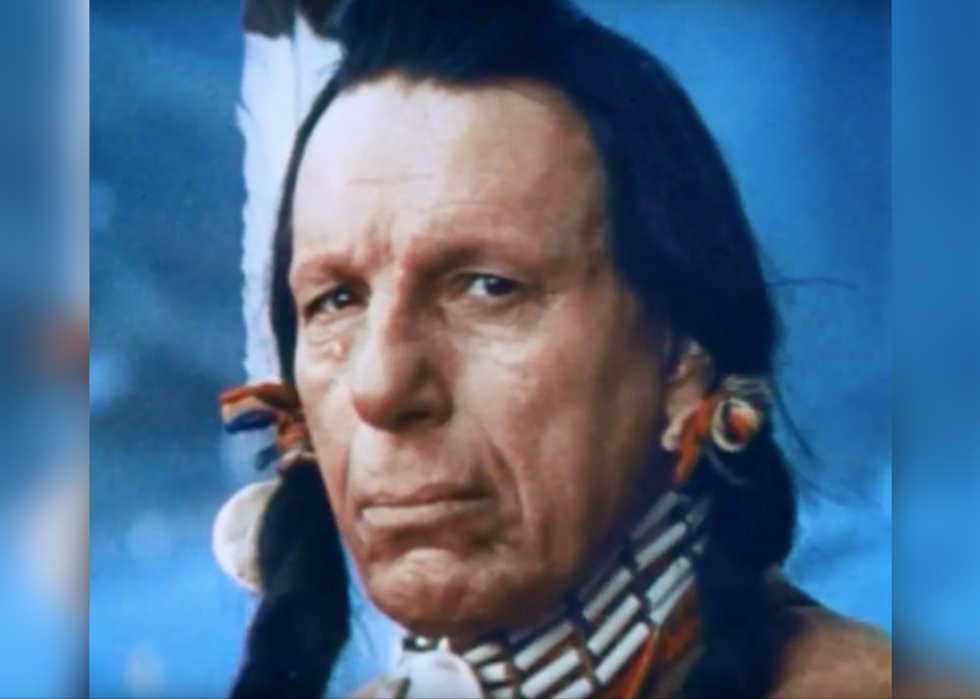
12 / 50
The Crying Indian: Go on America Beautiful
Distraught over the endless carpet of litter covering his native land, America's most famous Native American stared straight into the photographic camera and shed a single tear in the highly constructive 1971 public service announcement. Created by the Marsteller agency and the Ad Council for the nonprofit organization "Keep America Beautiful," the ad was launched on Earth 24-hour interval and contributed to the reduction of litter in the U.S. by a reported 88%. In 1996, it was revealed that the spot'south star, player Iron Eyes Cody, was non really a Native American, but the offspring of Italian immigrants. Despite the ensuing scandal, Advertizing Historic period magazine hailed the commercial as one of the almost successful advertising campaigns of the 20th century.
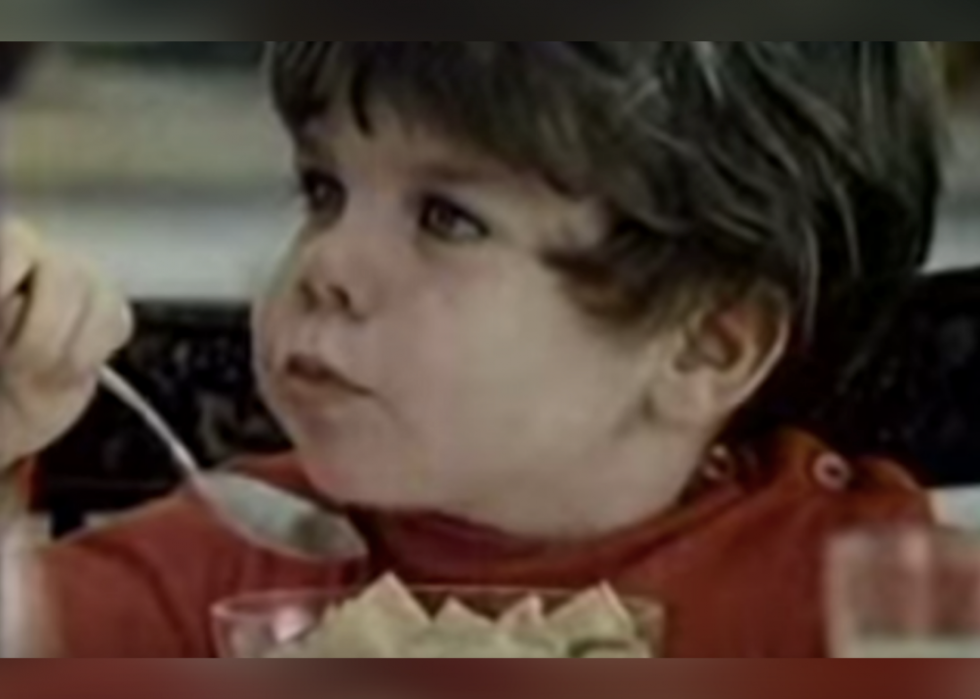
13 / 50
Life cereal: Mikey likes it!
Picky-eater Mikey became an overnight sensation after downing a bowl of Life cereal in front of his incredulous big brothers in this 30-second spot from 1971. The advertizement spawned an enduring urban myth that child actor John Gilchrist died of a ruptured stomach after consuming exploding Popular Rocks candy followed past a Coca-Cola attorney. The ubiquitous catchphrase, "Mikey likes information technology," has weathered decades of use, and is currently the proper name of an artisanal ice-foam parlor in New York City's trendy Due east Village.
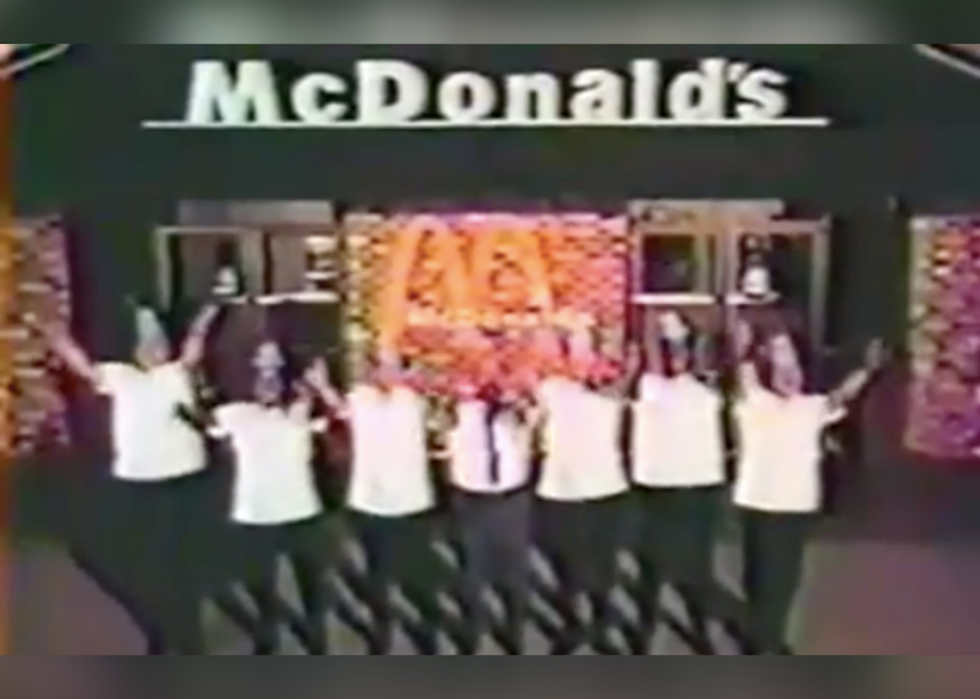
fourteen / 50
McDonald's: "You deserve a intermission today."
A chorus line of uniformed employees delivers McDonald'due south most famous tagline with all the blowing of a large Broadway musical in the 1971 ad developed past Chicago agency Needham, Harper & Steers. Penned by crooner Barry Manilow for the burger giant'due south outset national television entrada, McDonald's employed the tricky jingle for more than than 40 years before retiring information technology in 2014.
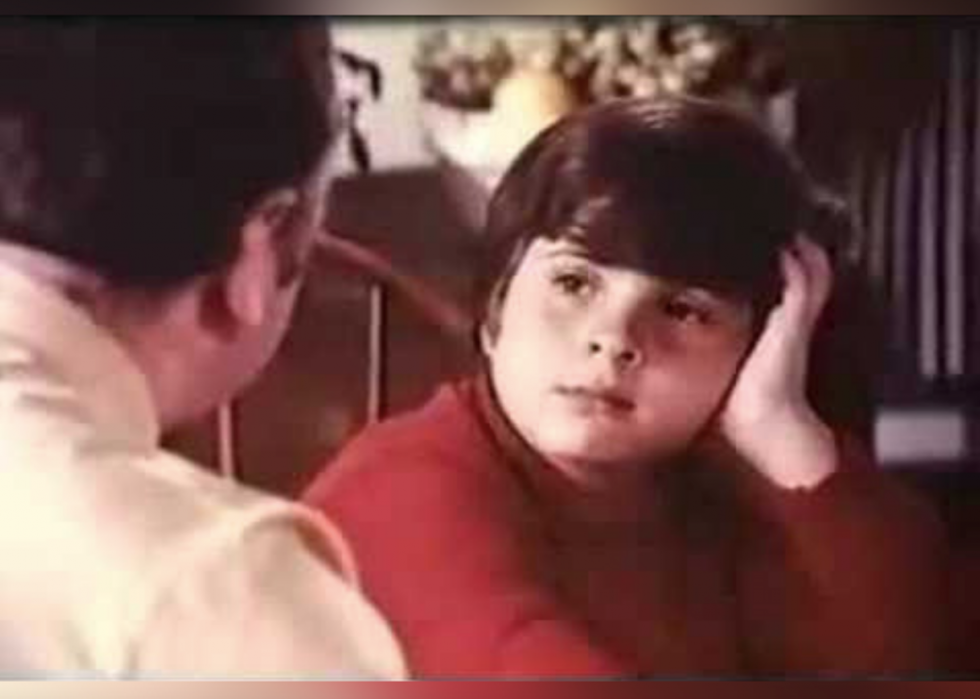
15 / 50
Kellog'south: "Leggo My Eggo!"
Kellogg's offset Eggo commercial, which aired in a plum spot during the "Brady Bunch," historic the eternal battle of wills betwixt parents and children. Created past the Leo Burnett bureau, "Leggo my Eggo!" remained Eggo's catchphrase from its inception in 1972 through 2011, when it was replaced by the "Simply Delicious," campaign. When that slogan failed to excite customers, Burnett brought back the one-time tagline in 2014.
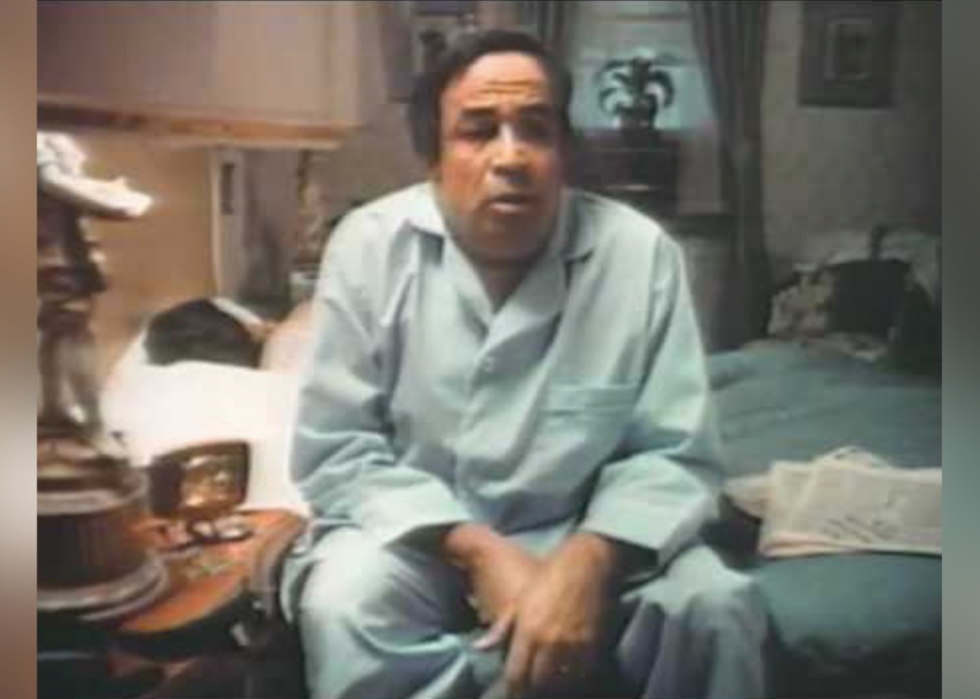
16 / 50
Alka Seltzer: "I can't believe I ate the whole thing."
In 1972, Alka Seltzer launched a commercial equally unglamorous equally indigestion itself. The spot featured a married, middle-aged couple striking the hay. When married man, played past character actor Paw Moss, is overcome by a gluttony fueled assail of heartburn, he utters Alka Seltzer's unforgettable catchphrase: "I can't believe I ate the whole thing." An advertisement archetype, the commercial was admitted in 1977 to the Clio Awards Hall of Fame.
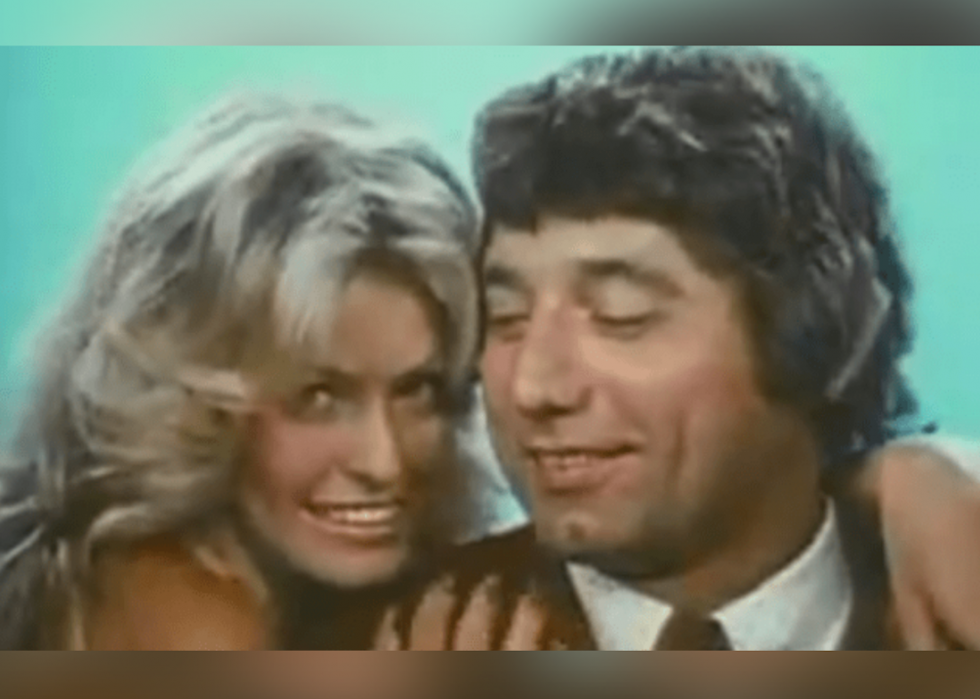
17 / 50
Joe Namath: Noxzema Shave Cream
In this suggestive 1973 Super Basin spot for Noxzema shave cream, Pro Football game Hall of Famer Joe Namath can't look to take shaving cream applied past future Charlie's Angel, Farrah Fawcett. The 30-second celebrity endorsement, which price $42,000 to produce, was an instant striking with fans who couldn't become plenty of the pair'south flirtatious interaction.
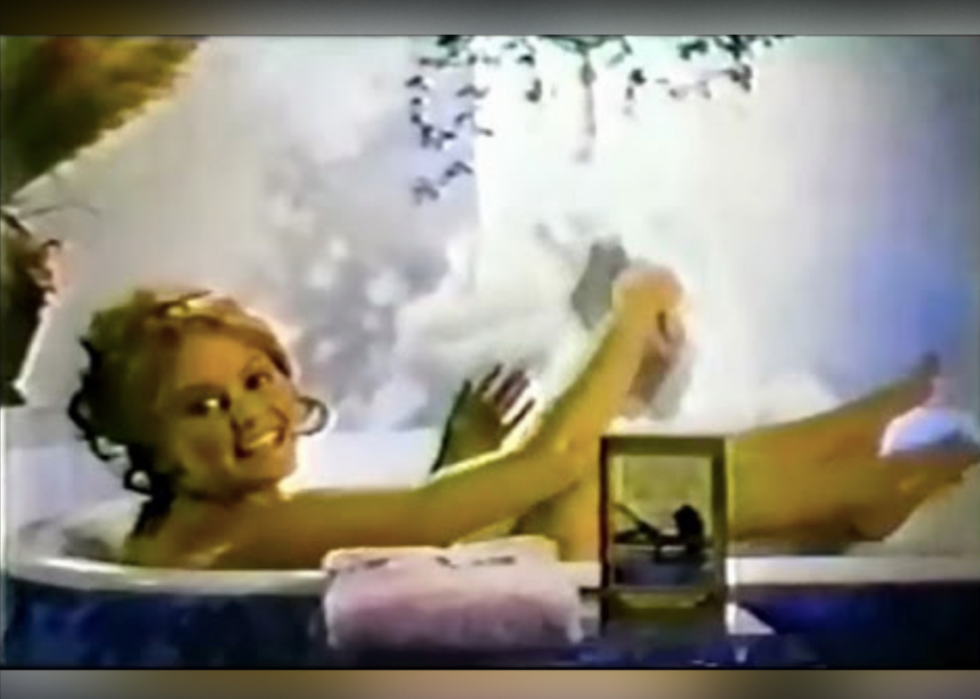
18 / 50
"Calgon, take me away!"
"The traffic. The dominate. The infant. The dog!" The feminist movement brought greater opportunity to American women, but "having it all" was often a hard juggling act. Calgon made an appeal to this emerging demographic with this 1977 advertising, encouraging working women to escape the stresses of modern life with a relaxing Calgon bath. The pop tagline firmly imprinted itself on the national consciousness and has provided provender for endless memes.
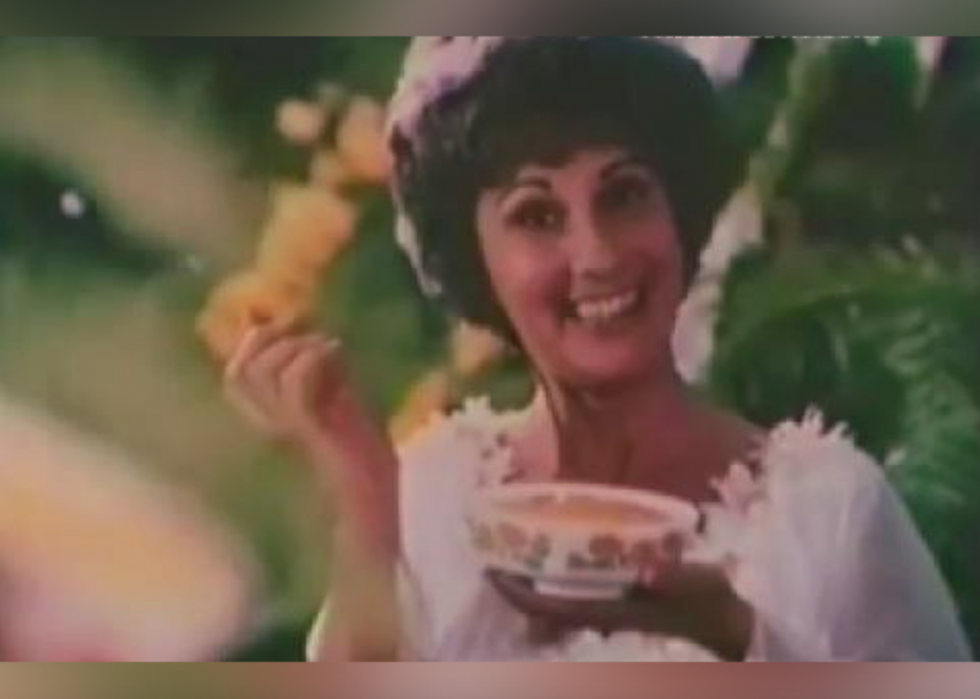
xix / 50
Chiffon margarine: "When you recall it's butter..."
In 1977, Chiffon launched the first of a number of commercials featuring actress Dena Dietrich as a vengeful Mother Nature. Taken in by the buttery taste of Chiffon margarine, Dietrich threatens, "Information technology's not nice to fool Mother Nature," and summons an ominous thunderclap. Created by the D'Arcy Masius Benton & Bowles agency, Dietrich's acidic delivery of the snappy catchphrase was a hit with consumers.
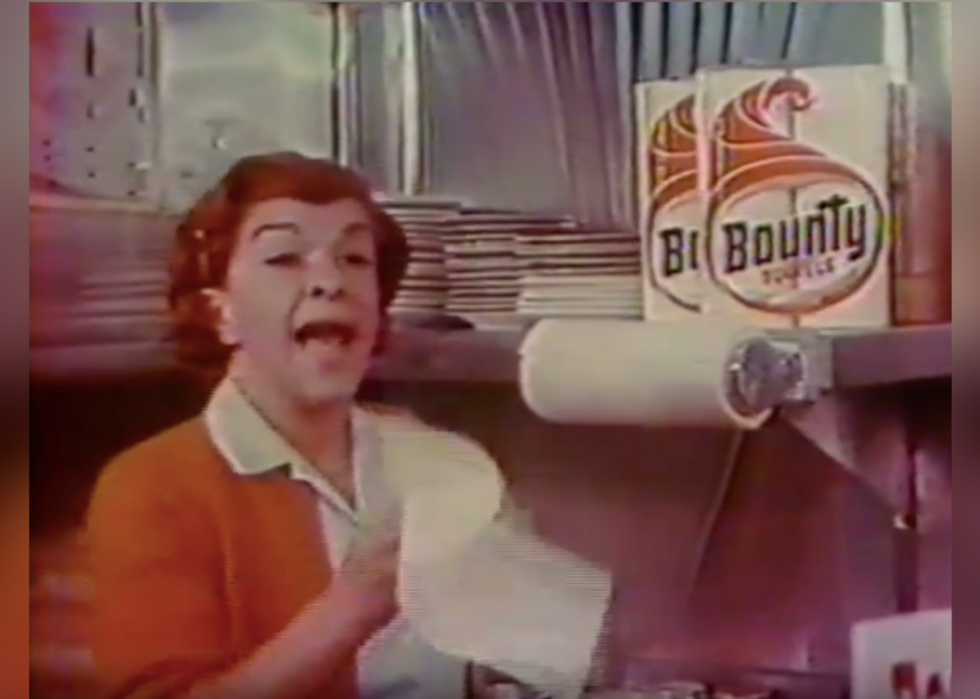
20 / 50
Compensation: The quicker-picker-upper
Before she was Rhoda's mom, pint-sized powerhouse Nancy Walker lit upwardly television screens as Compensation's Rosie, the wise-dandy waitress. The first commercial launched in 1971 and was so successful, Walker reprised the role for 20 years.
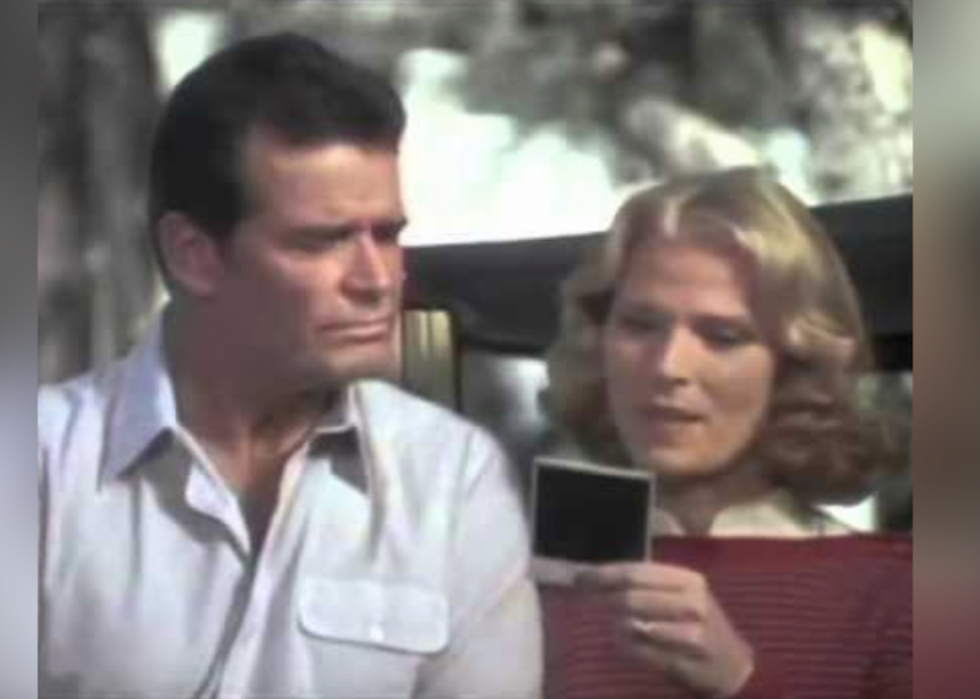
21 / l
James Garner and Mariette Hartley for Polaroid
In 1977, Kodak turned to "The Rockford Files" star James Garner for its Polaroid camera campaign, pairing him with bottom-known actress Mariette Hartley in a serial of charming and witty television spots. The chemistry between the two stars was so authentic, audiences were convinced the pair were a real-life couple. Although the rapport was nothing more than than stellar acting, many Americans believed Hartley was to blame for Garner'southward divorce. The ads proved to be and then popular, Kodak would go on to brand 250 more than commercials in the post-obit decade.
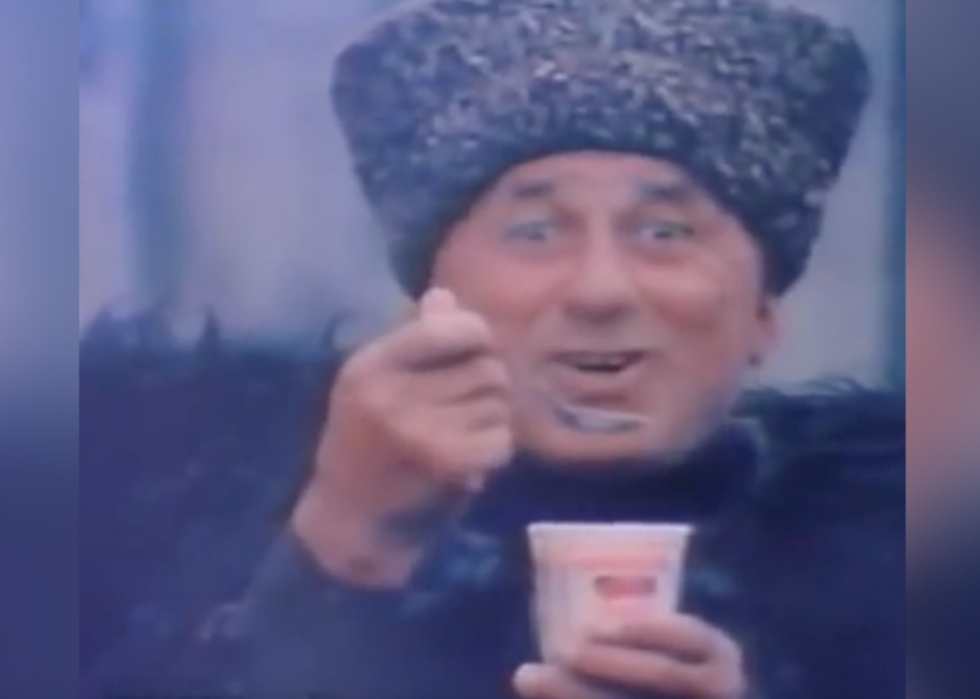
22 / 50
Dannon: "In Soviet Georgia..."
The Soviet Union may no longer exist, just Dannon yogurt is still going strong and can thank an innovative 1977 commercial set in what is now the independent country of Georgia. The ad plays like a documentary, depicting a number of exceptionally spry Georgian centenarians engaged in activities such as chopping woods and horseback riding. A voiceover informs viewers that Georgians frequently live to a ripe erstwhile historic period, and, coincidentally, eat a lot of yogurt. American audiences drew the connection, and Dannon's declining sales all of a sudden skyrocketed.
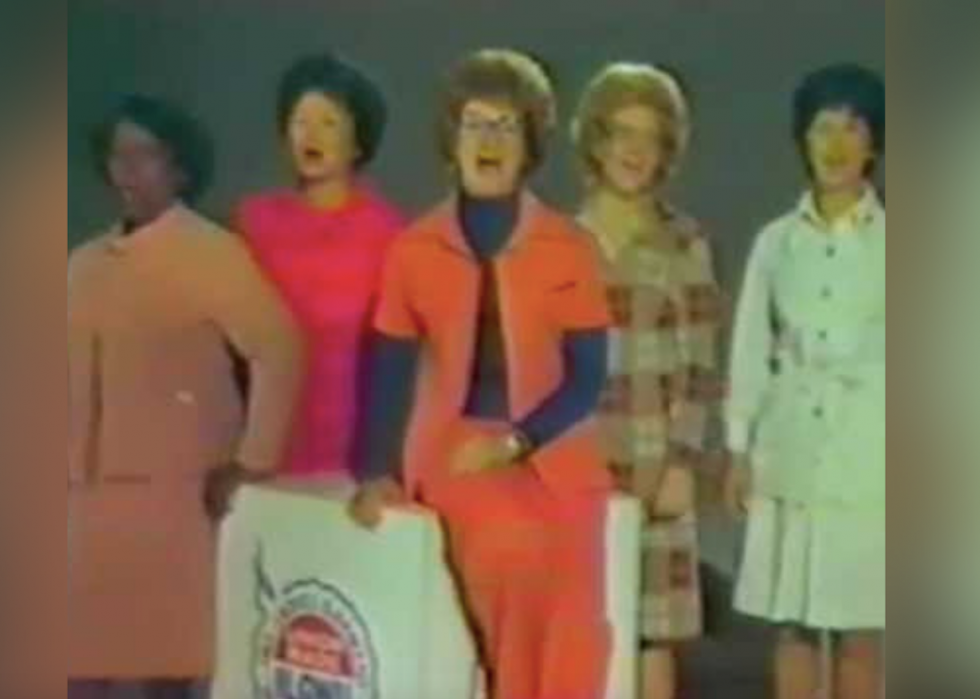
23 / 50
ALCU: "Look for the Union Label."
One of the virtually memorable jingles in advertising history wasn't function of a high concept advertizement campaign and didn't advertise an innovative production. The "Look for the Spousal relationship Label" song, written by Paula Green for the 1976 International Ladies' Garment Union spot sold America on a progressive vision of worker solidarity back when the United States was still a center for manufacturing jobs.
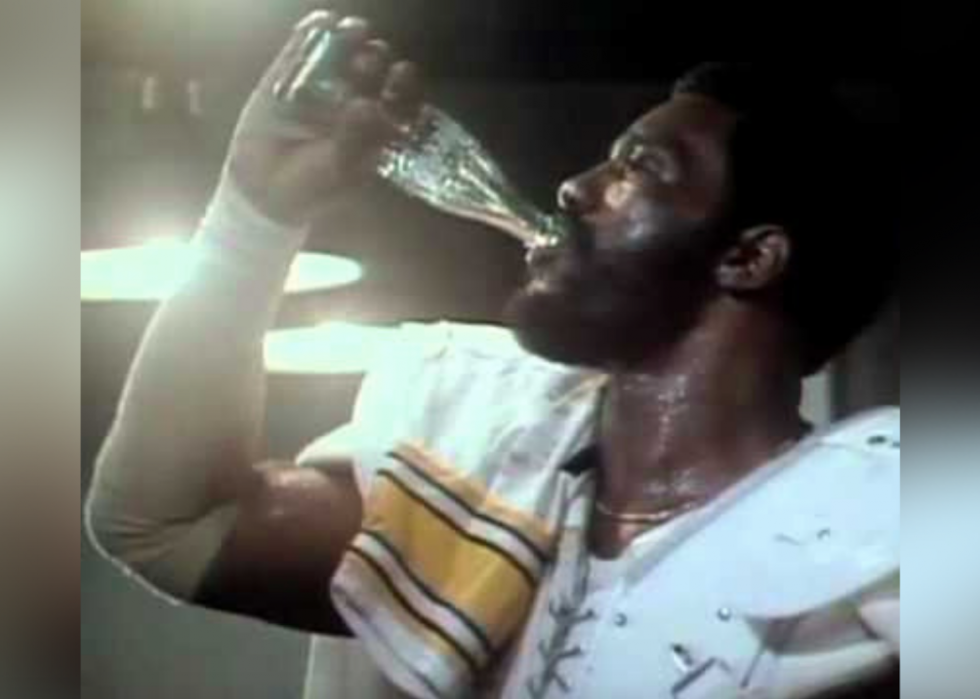
24 / 50
Mean Joe Green for Coke
Pittsburgh Steeler Charles Edward Greene, aka "Hateful Joe Greene," marketed himself, as well every bit Coke, in the archetype 1979 McCann-Erickson advertizing, which showcased the football star'southward softer side. One of the first blackness men to appear in a commercial for a national brand, Greene gruffly accepts a post-game Coke from a young fan and takes a swig, then flashes a winning smile and tosses the boy his game bailiwick of jersey. The advertising premiered during the 1979 Mon night football season and figured prominently during the 1980 Super Bowl.
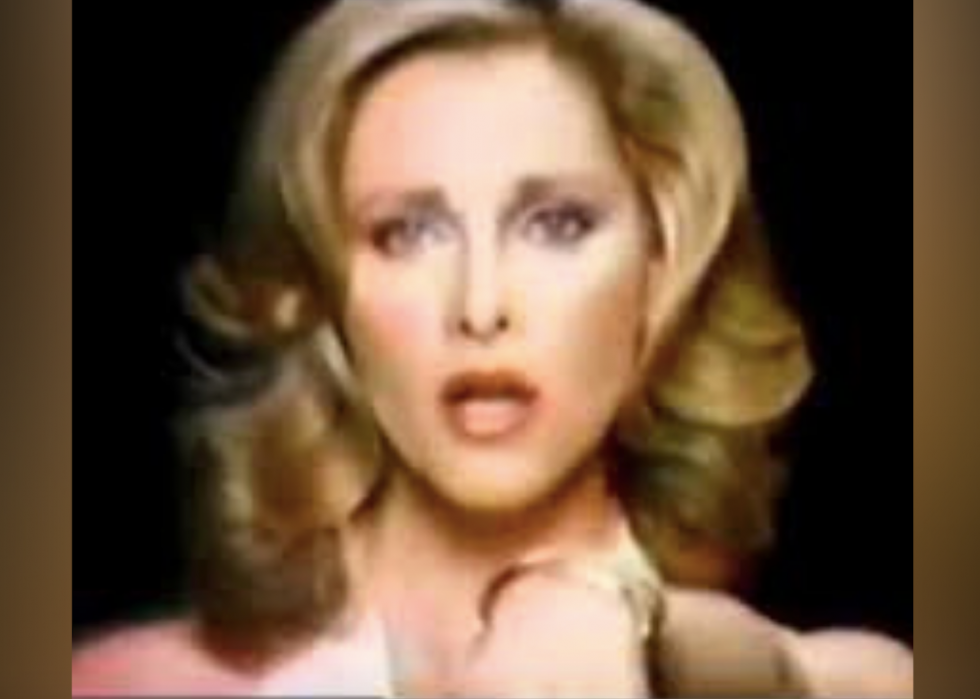
25 / fifty
Enjoli perfume
The capable heroine of Enjoli perfume's early 1980s commercial didn't need a Calgon bath to relieve the stress of modern life—she could "bring home the bacon, fry it up in a pan, and never let y'all forget you're a human being." An ode to female empowerment, Enjoli tapped into the energy of the women's movement to target their female person demographic.
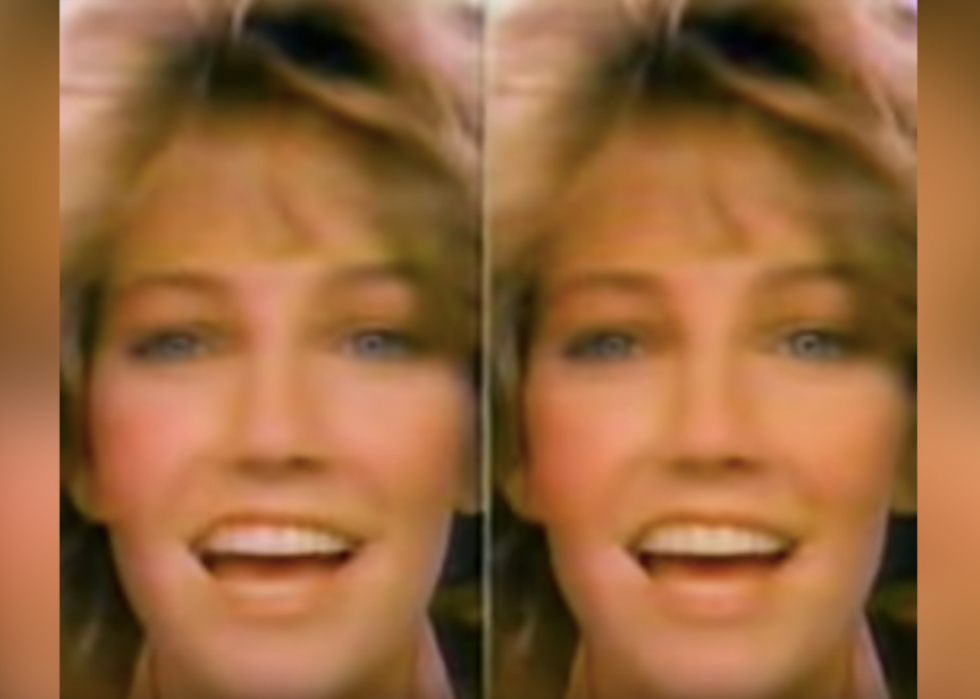
26 / 50
Fabergé Organics
Before the tv show "Dynasty," Heather Locklear—more accurately, multiple Heather Locklears—peddled Fabergé Organics shampoo via an infectious advert that used the power of Boob tube to promote the product through a traditional discussion-of-oral fissure campaign. After extolling the shampoo's virtues, Locklear told consumers that she told 2 friends, who in plow told two friends, equally her paradigm multiplied on the screen.
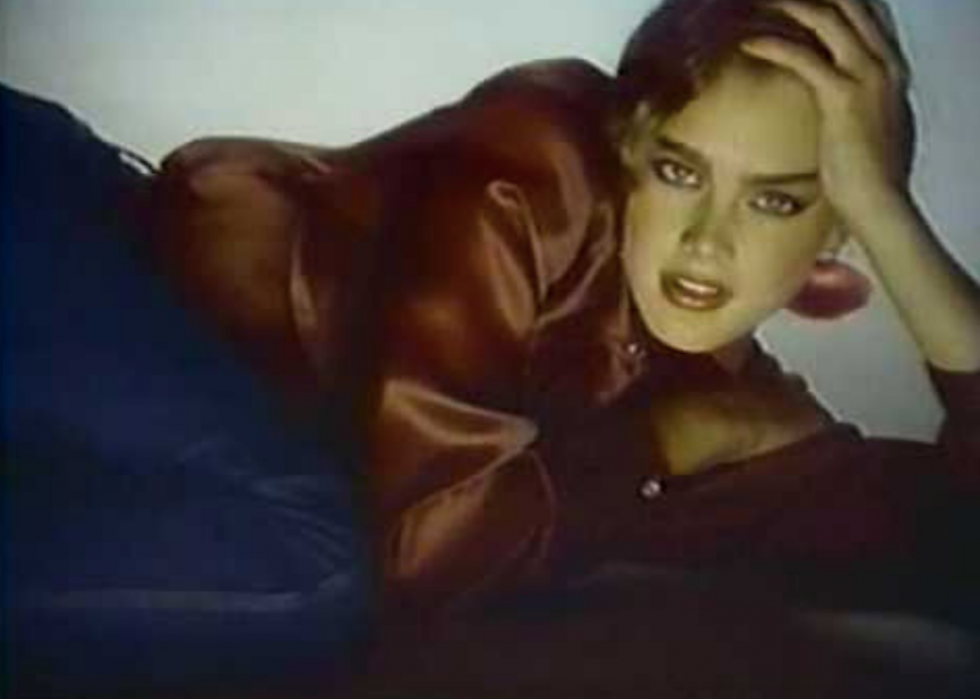
27 / fifty
Brooke Shields for Calvin Klein Jeans
A 15-twelvemonth-one-time Brooke Shields, dressed in a pair of jeans and a half-buttoned blouse, informed viewers that null came betwixt her and her Calvins in the infamous 1981 jeans commercial. Shot by legendary fashion photographer Richard Avedon, the overtly sexual ad was banned past both ABC and CBS. Designer Calvin Klein, however, was unphased, remarking "Jeans are like sex. The tighter they are, the amend they sell."
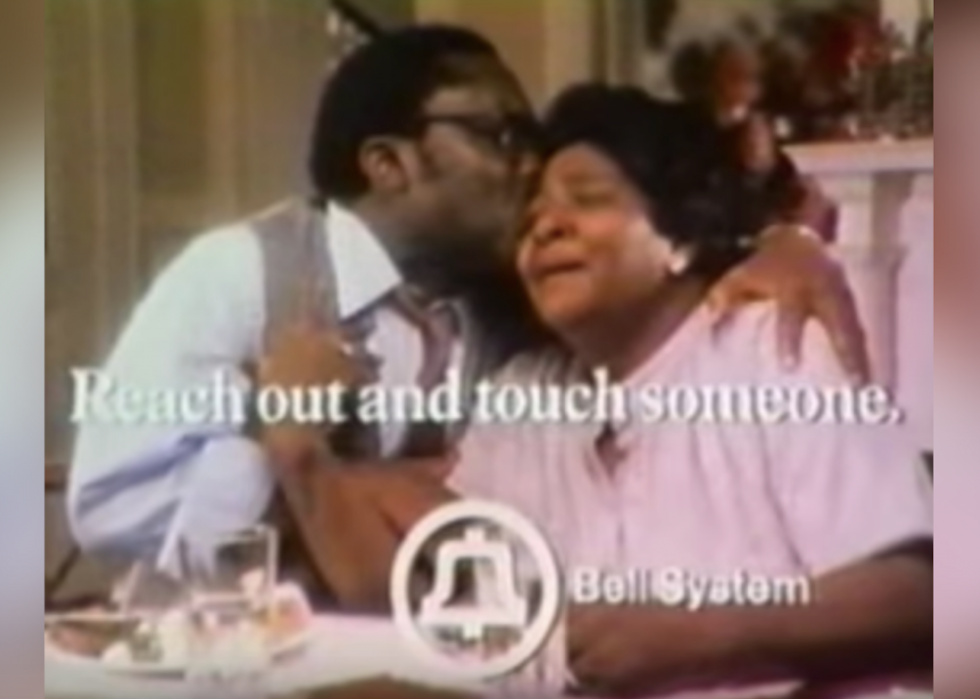
28 / 50
At&T: "Reach out and bear upon someone."
One of the biggest tearjerkers in commercial history, Bell Phone's 1981 "Joey called" advertizement played on traditional family dynamics and the popular conception that long distance meant bad news. Created past N.Due west. Ayer & Partners, the spot featured a middle-aged couple discussing a contempo phone call from their son. Dad assumes in that location'due south problem in paradise until Mom informs him that she's crying tears of Joy—Joey called just to say "I love you." The commercial came at a disquisitional time for AT&T, a monopoly on the brink of divestiture facing competition from new kids on the block such as Sprint and MCI.
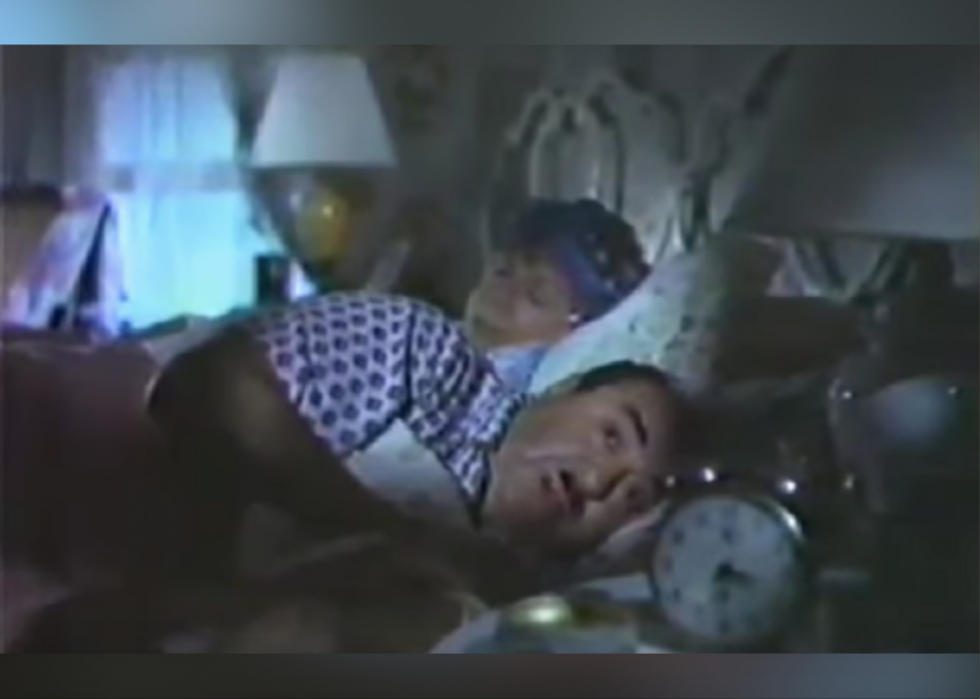
29 / fifty
Dunkin' Donuts: "Time to make the donuts."
In Dunkin' Donuts' 1981 advertizement, dedicated baker Fred awakens at a terribly early hr every morning, grumbling, "Time to make the donuts"—one of the most famous catch phrases in the annals of advert history. The face of Dunkin' for xv years, classically trained actor Michael Vale appeared in more than than 100 Dunkin' commercials. When Vale retired in 1997, his send-off included a party and a parade, with most half-dozen 1000000 gratuitous donuts distributed to Dunkin' customers.
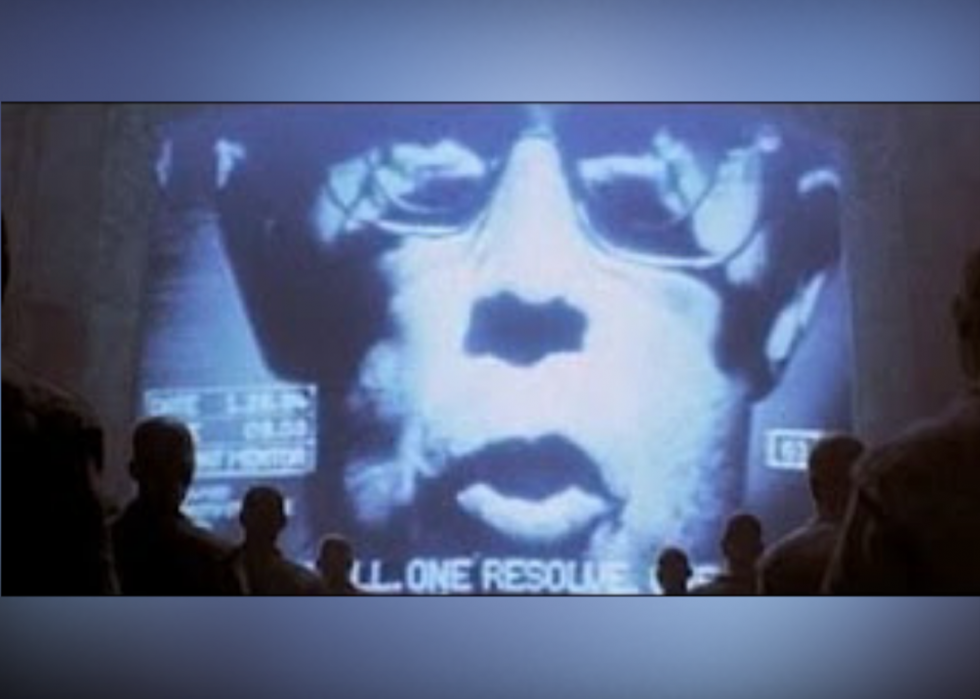
thirty / 50
The Apple revolution
Hailed by some as the greatest ad of all time, the 1984 Apple commercial created by the Chiat/Solar day agency bombed initial market testing and was almost scrapped. The innovative spot depicted a gray, Orwellian dystopia smashed by a female person athlete wielding a mallet, followed by an official announcement regarding the imminent release of the Macintosh personal computer. A revolutionary advertisement inspired by a revolutionary product, it offset aired during the 1984 Super Basin and sparked $155 1000000 in sales within 3 months of its airing.
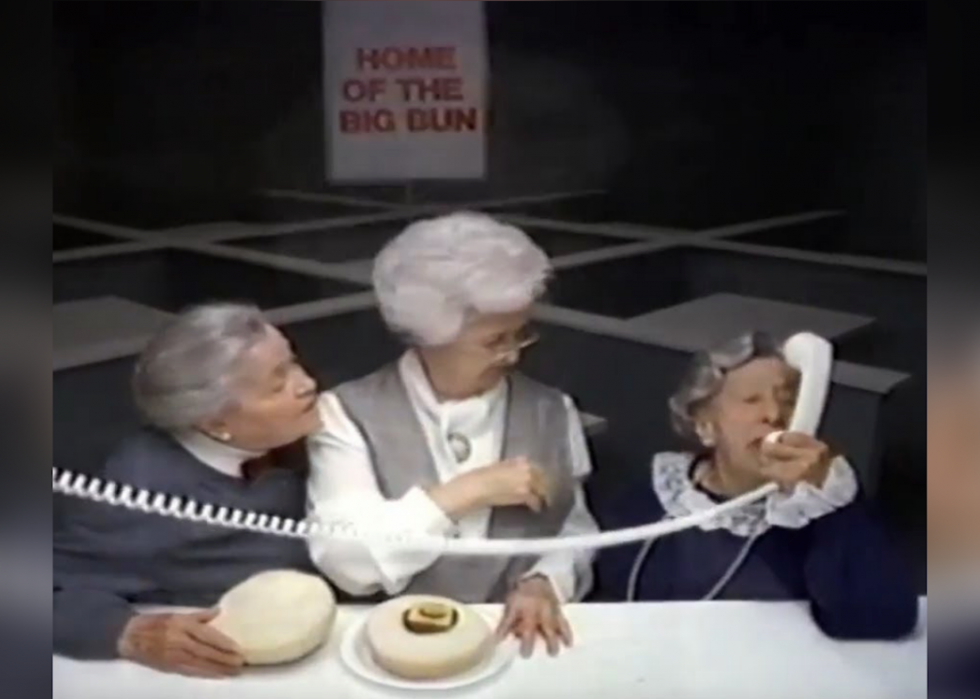
31 / 50
Wendy's: "Where'south the Beef?"
The 1984 Super Bowl was a standout year for television receiver commercials and included Wendy's "fluffy bun" ad, which proved that it isn't the question simply who'southward asking it that counts. The original pitch, featuring a middle-aged man asking the perennial question "Where's the beef?" failed to print—but when disgruntled octogenarian Clara Peller demanded accountability for a competitor's skimpy patty, the catch phrase was soon on anybody's lips. Created past the Dancer Fitzgerald Sample agency, "Where's the beef?" is cited by Ad Historic period equally one of the top 10 slogans of the 20th century.
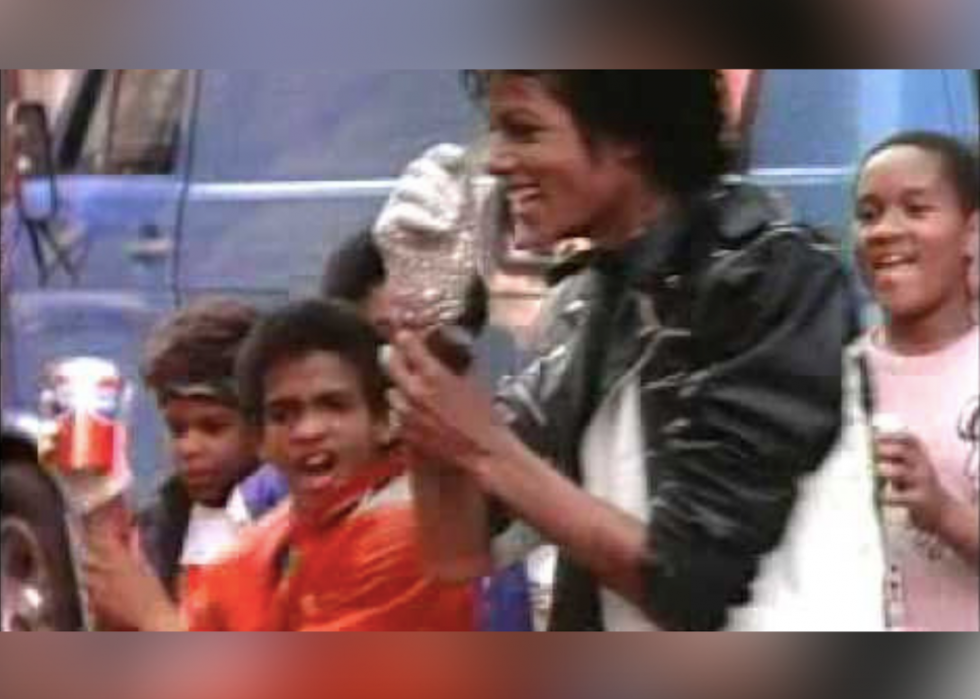
32 / l
Michael Jackson for Pepsi
A year after Michael Jackson's smash album "Thriller," was released, the star signed a $5 million deal with Pepsi, making him the face of its "New Generation" campaign. Pepsi launched the first of three ads featuring Jackson in 1984. Although the singer himself graced the spot for only a few fleeting seconds, Jackson did endure serious burns while filming when pyrotechnics caught his hair on burn—an accident that may have sparked his fatal pain-killer addiction. The ad's premise—a young fan imitating the pop idol—hasn't aged well in light of the sexual abuse allegations levied against Jackson in recent years.
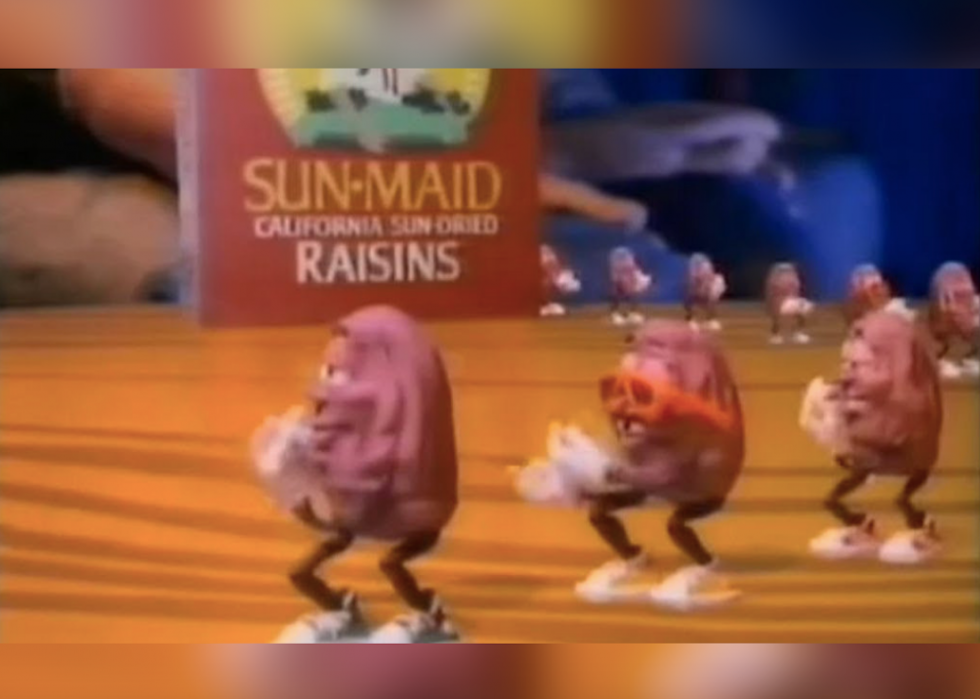
33 / 50
The California Raisins
Commissioned by the California Raisins Informational Board to combat slumping sales, San Francisco-based agency Foote, Cone & Belding brilliantly paired a group of Motown-inspired Claymation raisins with the 1960s hit, "I Heard It Through the Grapevine." The ad first aired in 1986 and was an overnight sensation, reportedly increasing sales by 20%. The California Raisins' have on the tune reached #84 on the Billboard Hot 100, and spawned four albums, two of which went platinum.
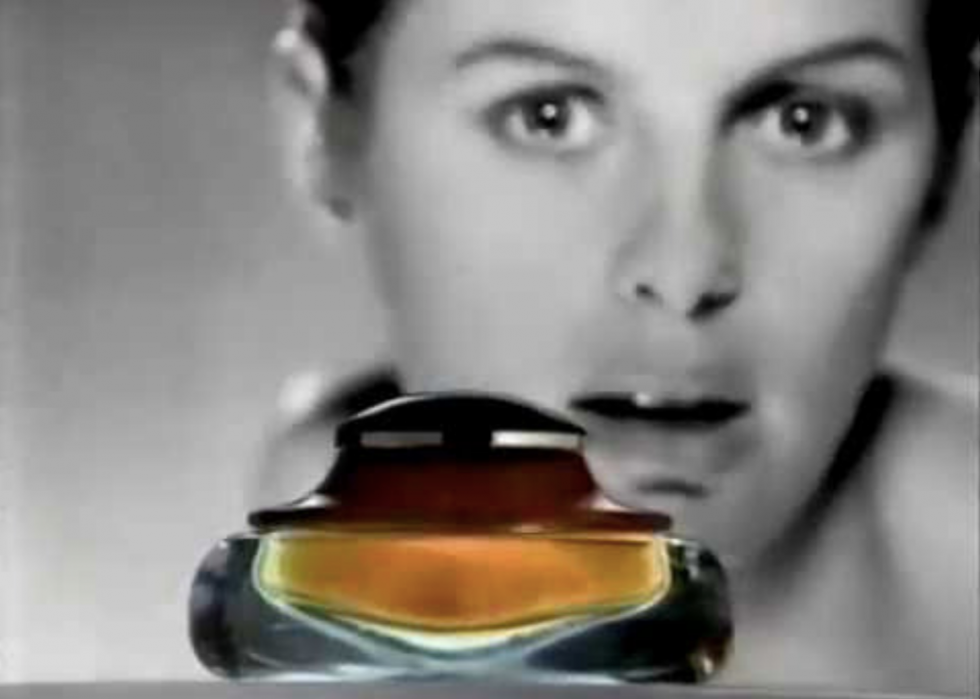
34 / fifty
Calvin Klein'south Obsession
In the mid-1980s, Calvin Klein launched a series of highly stylized commercials for his latest fragrance, "Obsession." Never 1 to shy away from controversy, the ads featured an elusive young adult female and her iv fascinated suitors—an older admirer, a younger man, a boy, and a adult female. Klein turned to acclaimed lensman Richard Avedon to write and directly the overtly sensual ads, which were then filmed by legendary cinematographer Nestor Almendros. "Sabbatum Dark Live" parodied the ad with a spot-on skit for fictional Compulsion perfume.
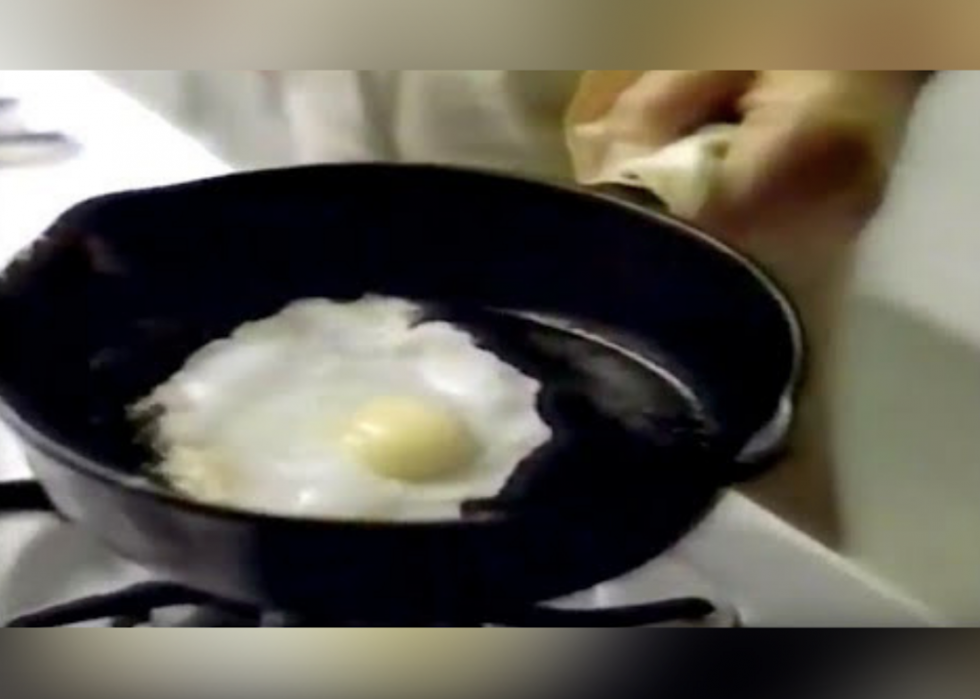
35 / 50
Partnership for a Drug-Costless America: "This is your brain on drugs"
Named one of Time Mag's most influential commercials of all fourth dimension, Partnership for a Drug-Gratuitous America'due south 1987 ad depicted the powerful image of an egg—continuing in for the human brain—sizzling in a hot pan. The disturbing metaphor was and so successful, it was brought back for a 1997 spot with actress Rachael Leigh Melt targeting heroin.
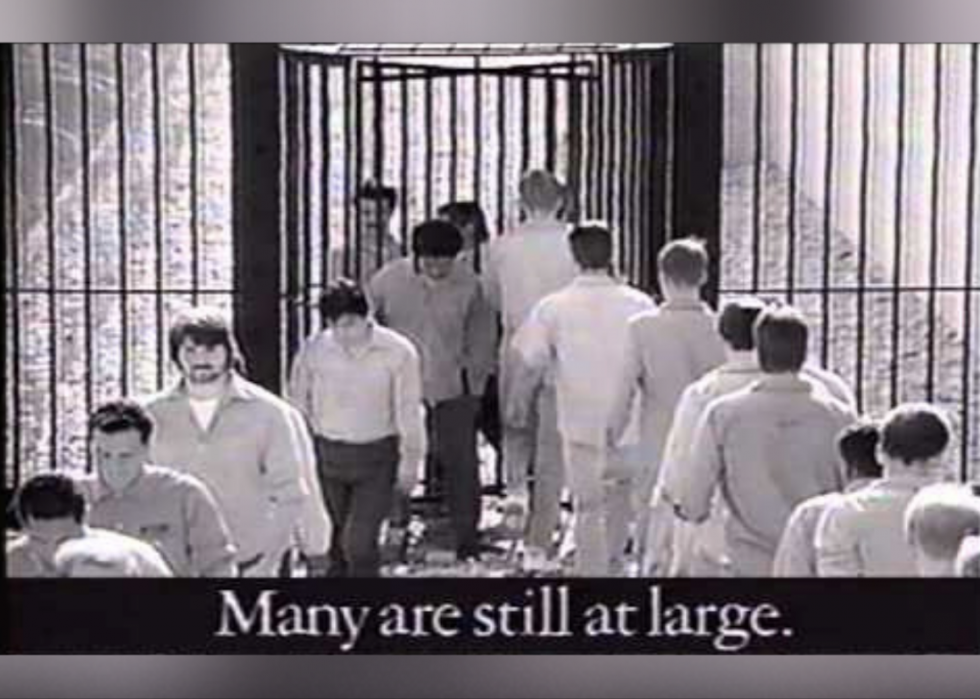
36 / 50
Michael Dukakis: The Revolving Door
Produced by Roger Ailes of Fox News fame, the 1988 Bush-league campaign's infamous "Revolving Door" commercial targeted the furlough program promoted by his opponent, sometime Massachusetts Gov. Michael Dukakis, pegging him as soft on law-breaking. The stark, black-and-white spot depicted an endless parade of men exiting then re-inbound a prison. Although the advertisement was considered by many Americans to be the about influential spot of the 1988 election run-upwardly, it has been criticized for existence racially charged and stoking prejudice.
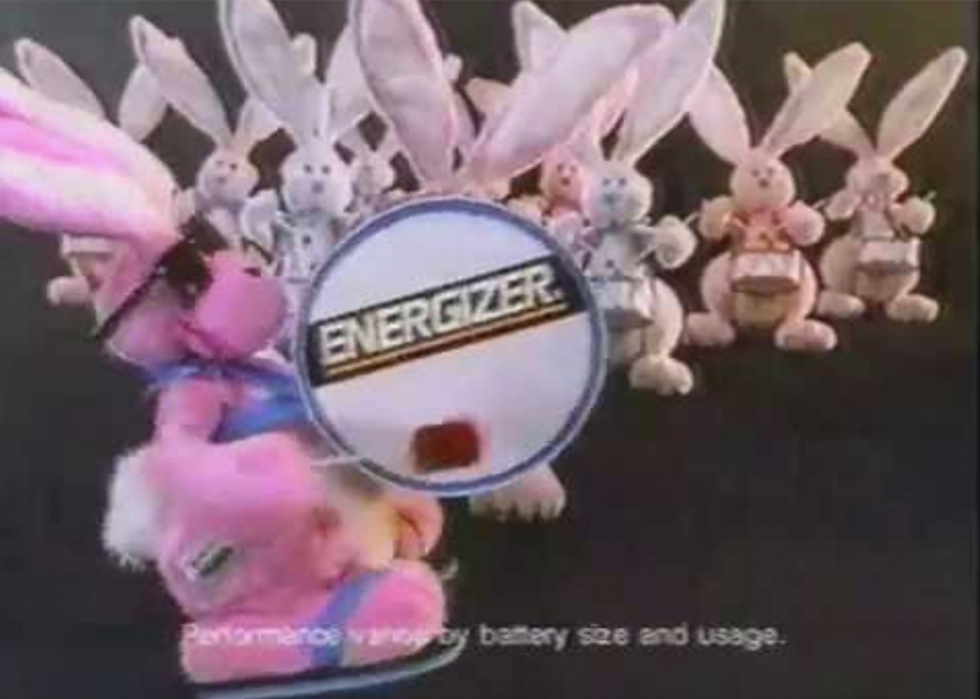
37 / 50
The Energizer Bunny
In 1989, the American public was introduced to the iconic Energizer Bunny, the pinkish, battery-operated toy rabbit that routinely outlasted his posse of manically drumming rabbits. Hailed as the "ultimate production demo" by Ad Age, the Energizer Bunny has appeared in over 100 ads over the past 30 years.
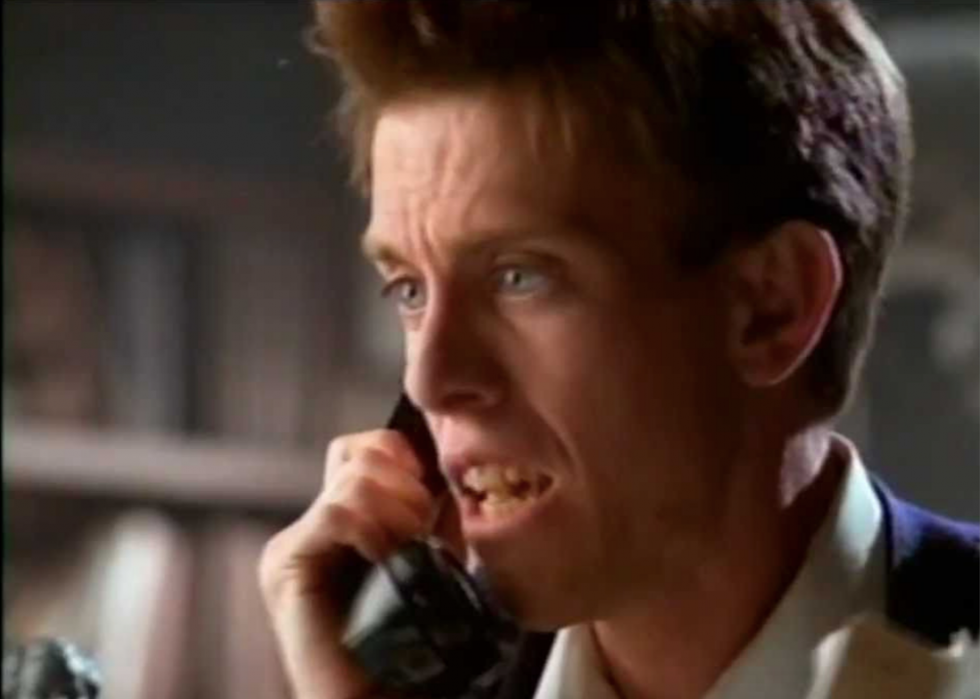
38 / 50
Got milk?
San Francisco-based advertising agency Goodby, Silverstein & Partners took an innovative approach to the legendary "Got milk?" entrada, asking a focus grouping to refrain from drinking milk and and then assessing how a lack of it affected their everyday lives. The answer? Greatly. The 1993 "Aaron Burr" ad for the California Milk Processor Board focused on the hazards of running out of milk and featured an eccentric collector who fails to reply a $10,000 question about Alexander Hamilton's nemesis, despite clearly knowing the answer. The poor wretch can't get the words out—he's run out of milk and can't launder down his peanut butter sandwich. The clever spot ended with the famous "Got milk?" tagline.
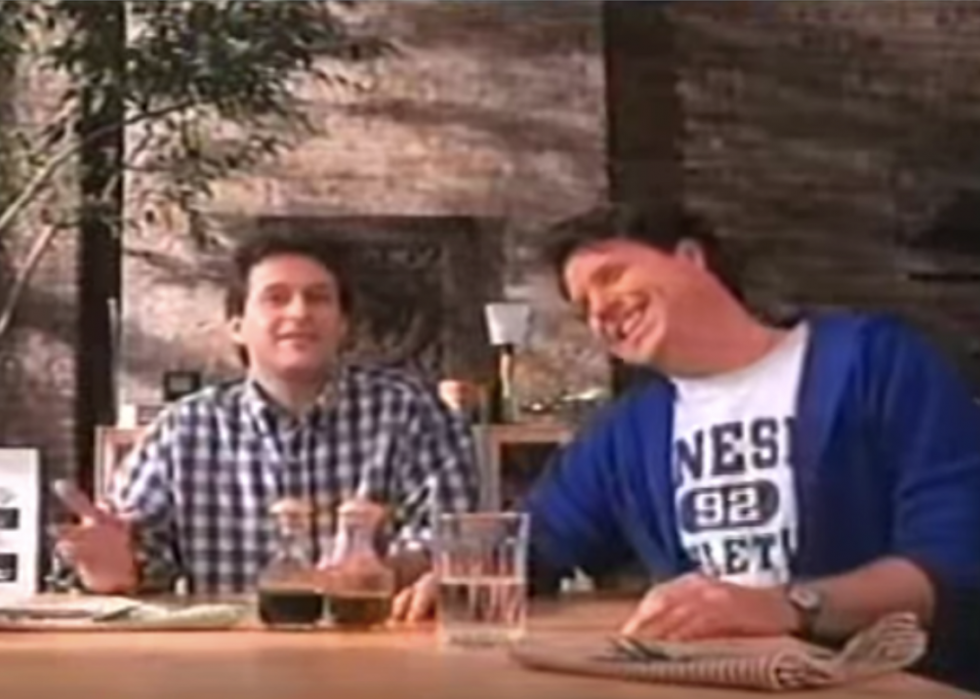
39 / l
Ikea: the first openly gay couple in a idiot box commercial
In 1994, Ikea introduced the first openly gay couple in a boob tube commercial. Express to major Eastward Coast markets, the advertisement took a homespun documentary approach to the featured partners' search for the perfect sofa, casually highlighting their backstory and loving, committed relationship. Ikea was inundated with letters of support, too equally aroused protests and even an empty bomb threat.
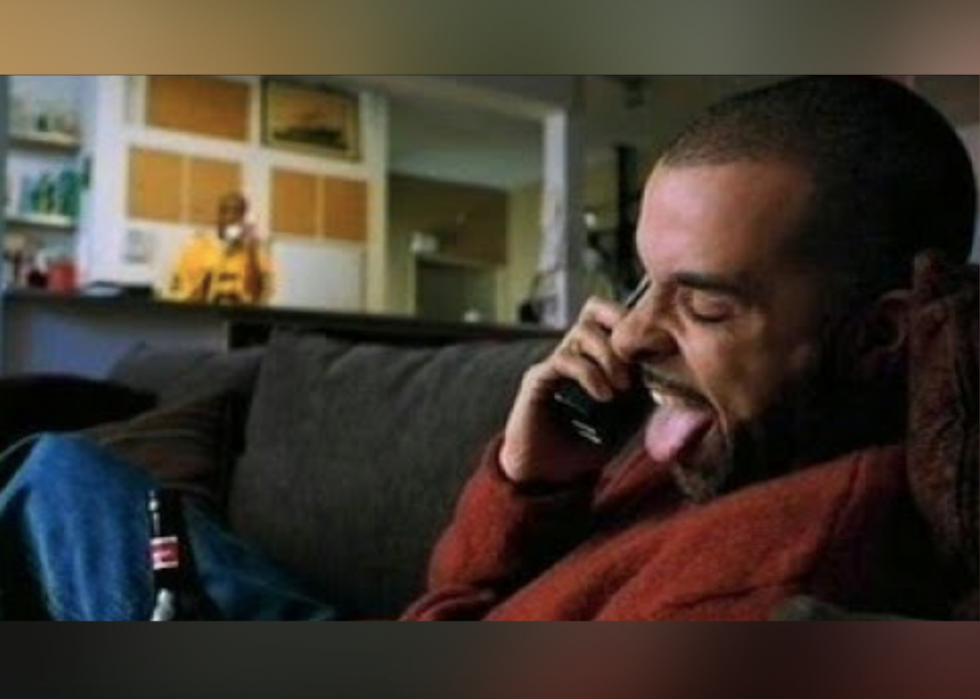
40 / 50
Budweiser: "Whaassup!"
Budweiser's quirky 1990 ad celebrated bro culture with the breakout catchphrase, "Whaassup!" The brainchild of 28-yr-quondam Justin Reardon, higher-ups at DDB Chicago initially resisted his claim that the concept would resonate with the youth marketplace. After greenlighting a limited campaign targeting urban markets, sales spiked and Reardon became a golden male child when the spot took home the Grand Prix at the 2000 Cannes Lions International Festival of Creativity.
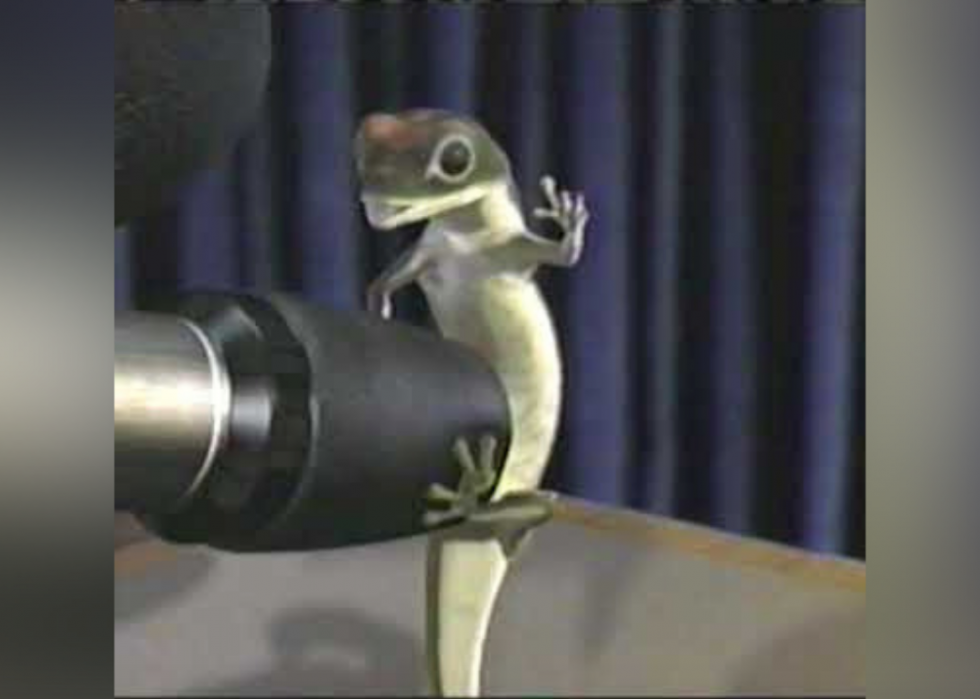
41 / 50
Geico's Gecko
Geico's mascot, the little green lizard named Martin, fabricated his tv debut in 1999. A relatively new auto insurance outfit at the fourth dimension, Geico was eager to launch its first TV ad campaign and compete with industry players. The Screen Actors Guild strike, however, quashed any plans to hire live actors, and the Geico Gecko was born out of necessity.
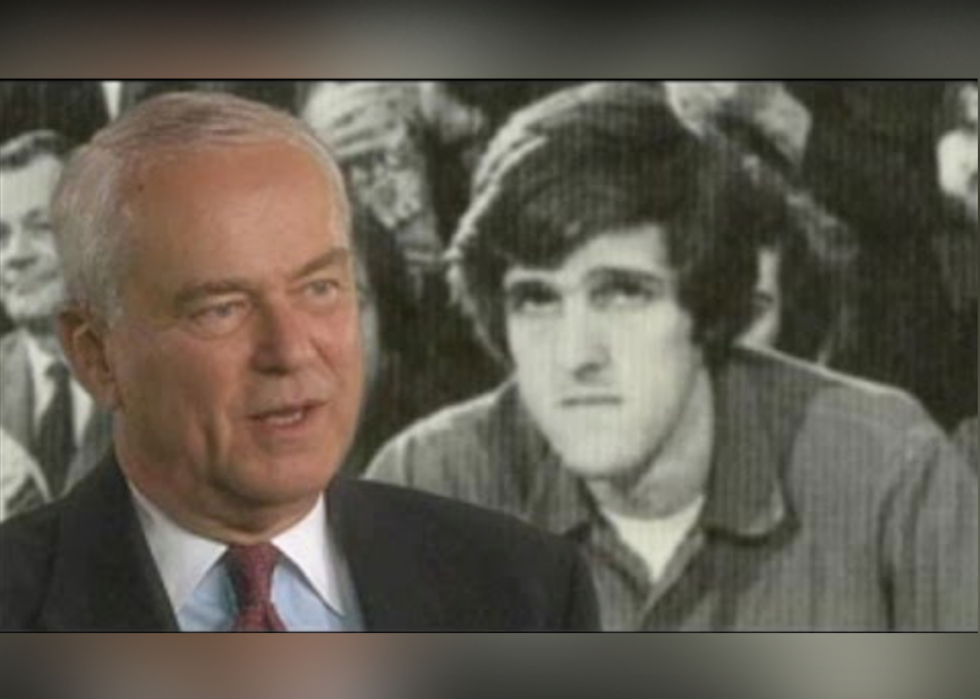
42 / l
John Kerry: Swiftboated
In one of the nastiest political commercials in mod times, the 2004 George Due west. Bush presidential re-election campaign targeted opponent John Kerry'due south military machine record in an ad spot known equally "Swift Boat Veterans for Truth." The advertising depicted actual veterans accusing Kerry, who adopted an anti-war opinion afterward serving in Vietnam, of lying most his experiences every bit a swift boat commander. Although the commercial played fast and loose with the facts, information technology did irreparable harm to Kerry's shot at the Oval Office. The ads were so effective, the term "swiftboating" entered the lexicon to draw whatsoever brutal personal set on against a public figure.
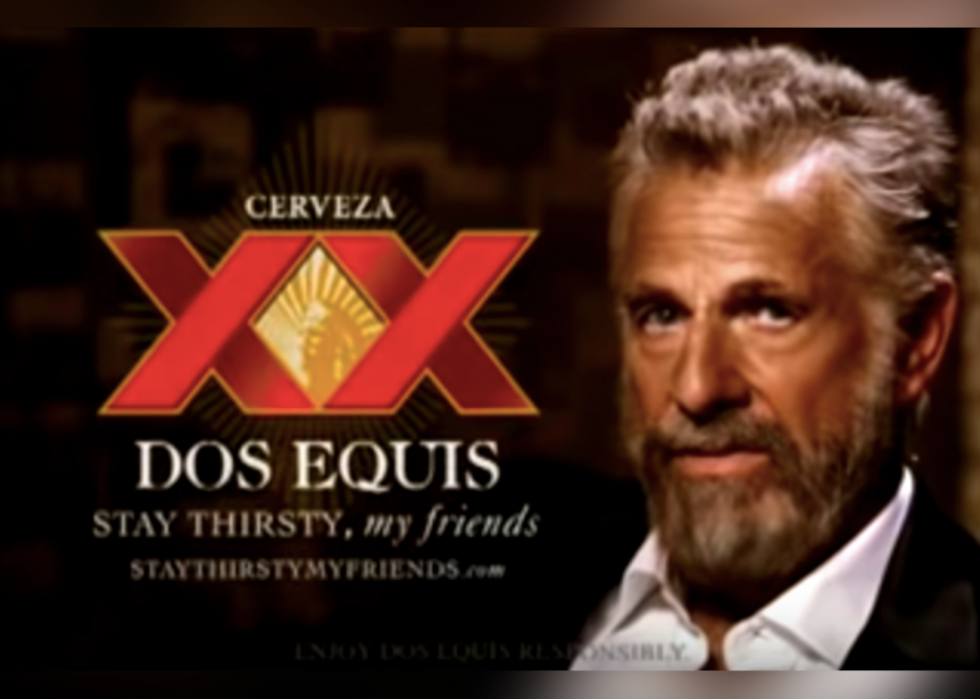
43 / l
Dos Equis: "Stay thirsty, my friends"
Since 2006, actor Jonathan Goldsmith has been billed as "the most interesting homo in the globe." In a series of unusually dry ads created by EuroRSCG, Goldsmith can exist seen jet-setting around the world with a bevy of cute women, arm-wrestling dictators, engaging in daring adventures, and, of course, drinking the occasional Dos Equis beer. The campaign went viral, driving Dos Equis sales up by 22% and insulating the Heineken brand from the threat of the craft beer motion.
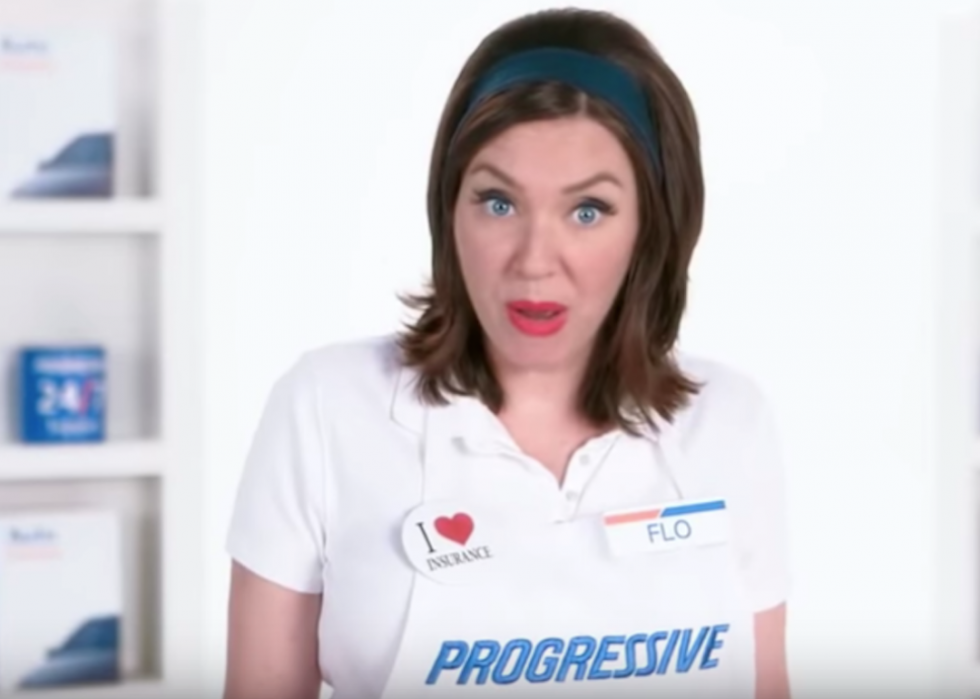
44 / 50
Progressive'due south Flo
Endearingly abrasive Flo has been the face up of Progressive insurance for the past 11 years. The first ad aired in Jan 2008 and used a mixture of humor, visual props, and a modernist setting to demystify the insurance industry and thereby win the trust of consumers.
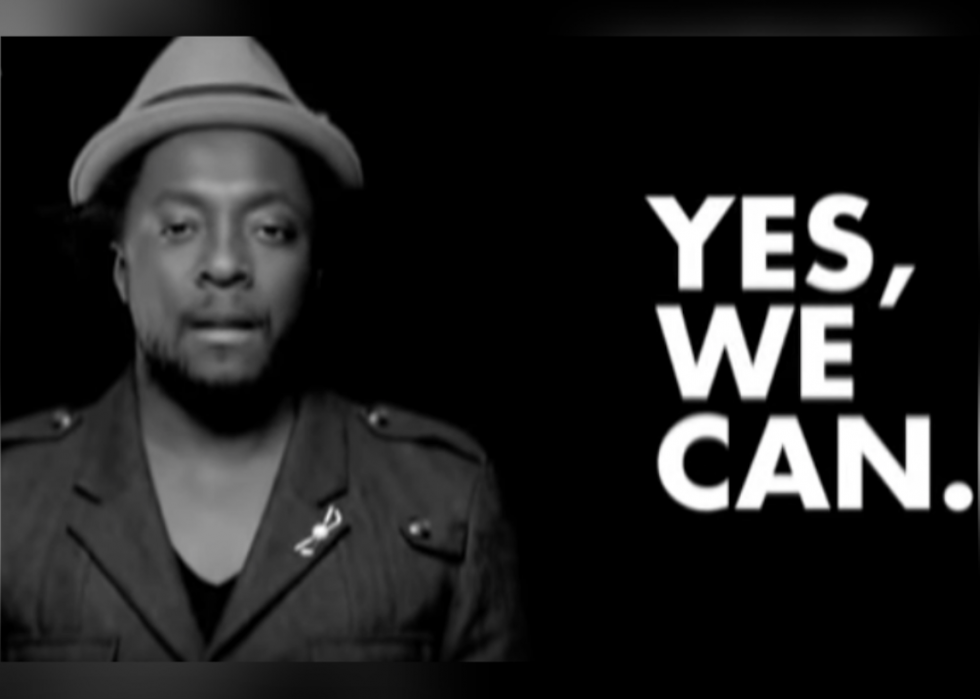
45 / 50
Barack Obama: "Yeah We Can."
Barack Obama promised voters a new approach for the country and his 2008 campaign didn't disappoint, harnessing the power of the internet to convey his bulletin to potential voters. The most four-infinitesimal spot intertwined Obama'southward ain words with a star-studded, upbeat music video created by the Black-Eyed Peas' volition.i.am. The viral video bankrupt from the confines of conventional television receiver, reinventing the political ad for a new generation of voters.
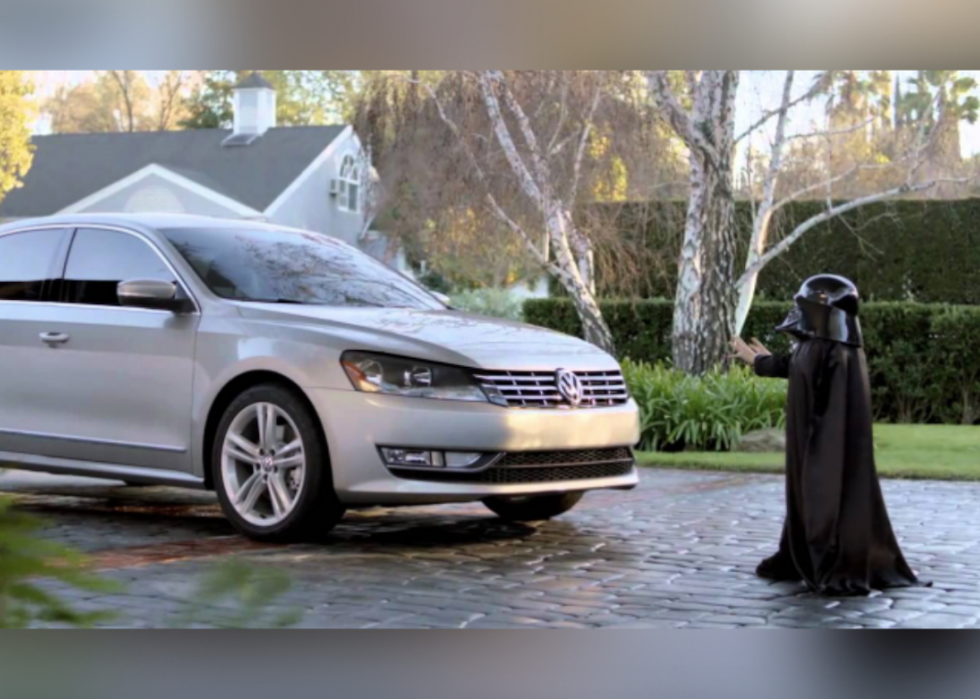
46 / 50
Volkswagen: The Strength
There are few things more awe-inspiring than a child'south imagination, save for mayhap a parent's honey. The Deutsch agency nailed it with "The Force", an advertisement chronicling the adventures of a pint-sized Darth Vader and his enterprising dad. In an unprecedented move, Volkswagen released the commercial on YouTube the Wed before the 2011 Super Bowl, racking upward 17 million views before kicking-off. According to Deutsch, the ad paid for itself before it even hit national television.
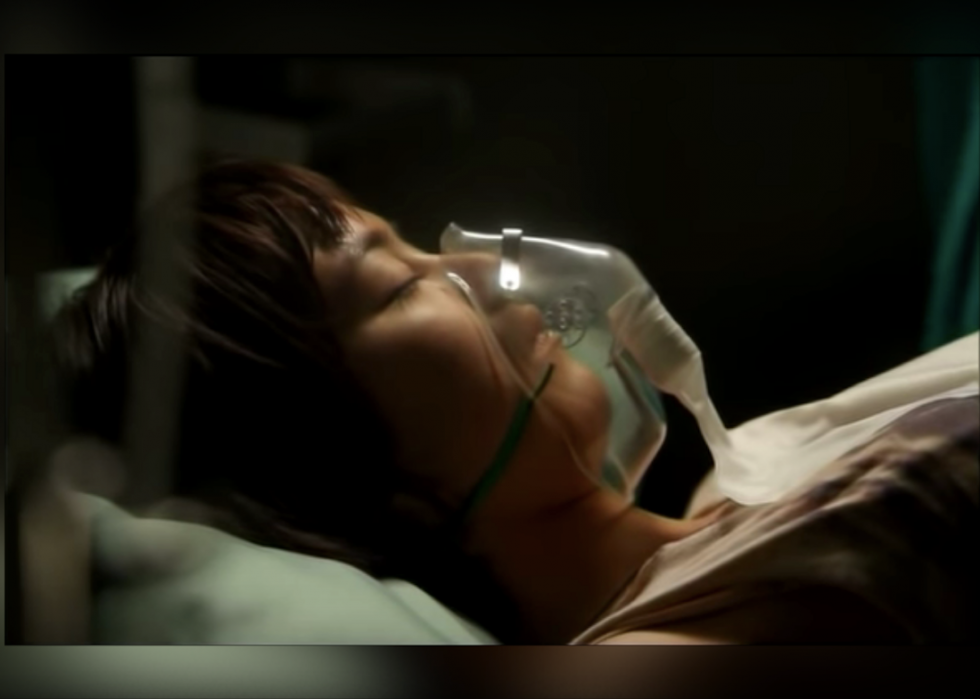
47 / 50
Thai Life Insurance: Silence of Love
Asia is famous for "sadvertising:" mini-melodramas that pull at the consumer'south heartstrings. Ogilvy & Mather Bangkok's 2011 "Silence of Love" ad kicked the formula up a notch, telling the tear-jerking tale of an ungrateful teen daughter and the sacrifices made for her by her deaf father. The life insurance commercial went viral, reaching an international audience far larger than its intended Thai market.
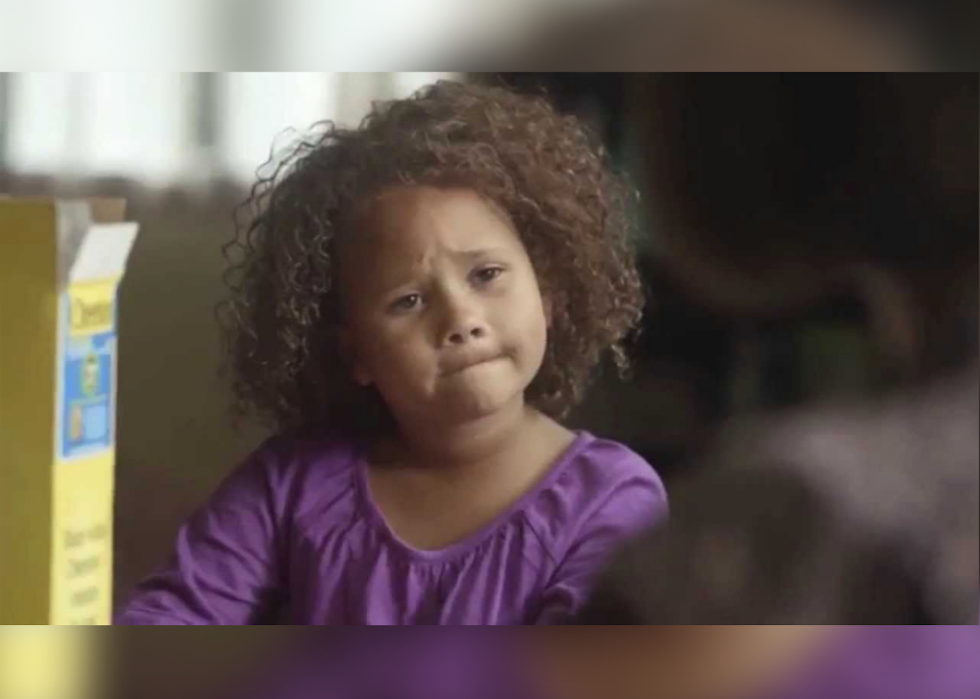
48 / 50
Cheerios and the all-American family unit
In Full general Mills' 2013 ad, a piddling girl adorably asks her mother about the nutritional value of their breakfast cereal. When mom responds that it'southward practiced for your center, the concerned tyke promptly places a scattering of Cheerios on her sleeping father'southward chest. What distinguished the eye-warming, family-friendly commercial was its use of a mixed-race family. The ad's official YouTube video was hijacked by bigots, forcing General Mills to disable the comment department, although the company refused to pull the advertizing.
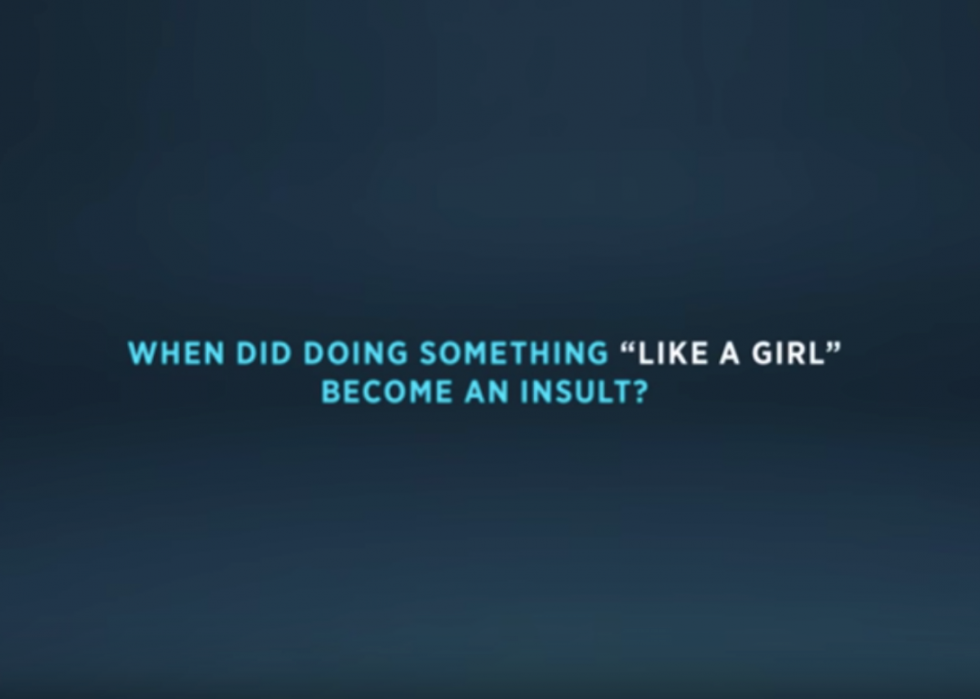
49 / 50
Procter & Gamble: "Similar a Girl"
Procter & Adventure smashed the patriarchy with its groundbreaking "Like a Daughter" ad. Created by acclaimed documentary filmmaker Lauren Greenfield, the commercial cross-examined traditional female person stereotypes, asking both boys and girls questions such as "What does it mean to throw like a daughter?" The 2015 Super Basin spot may accept been peddling Always feminine hygiene products (a Super Basin first), merely what it was really selling was female empowerment.
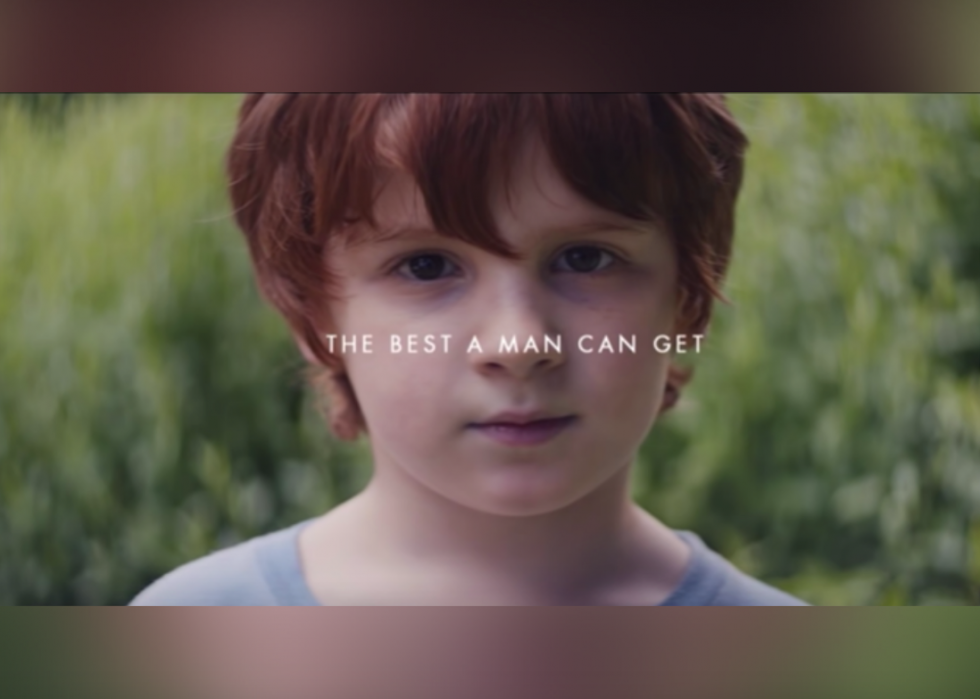
fifty / 50
Gillette: "The best a human can be."
Non to exist outdone by Procter & Take chances, razor behemothic Gillette responded to the MeToo movement past turning its familiar tagline "The all-time a man can go" on its head. Presented as an ironic question rather than a statement of fact, the 2019 Super Basin spot put toxic masculinity under the microscope—and consequently generated both praise and condemnation. Despite a boycott, Gillette stuck by its message—donating a total of $3 million to nonprofits working to enhance the consciousness of American males.
Trending Now
© Stacker 2022. All rights reserved.
Source: https://stacker.com/stories/2871/50-tv-ads-made-history
0 Response to "Commercial of Old People Going Out All Night and Becoming Young Again"
Postar um comentário